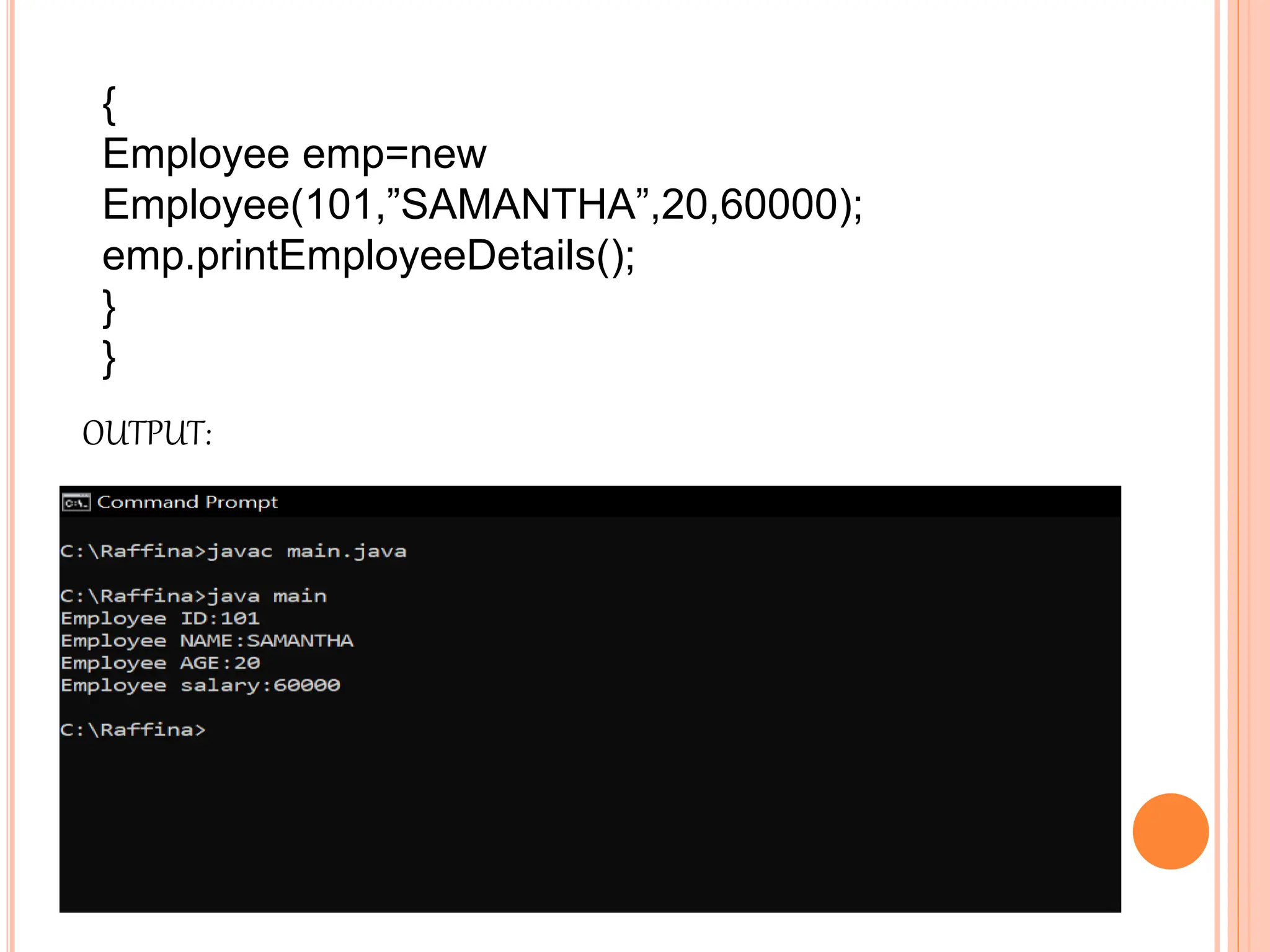The document introduces Java programming concepts including object-oriented programming (OOP), classes, objects, inheritance, abstraction, encapsulation, and polymorphism. It provides examples of each concept in Java and compares features of Java and C++ such as memory management, multiple inheritance, and overloading. The document also outlines applications of Java and provides a basic Java program example.
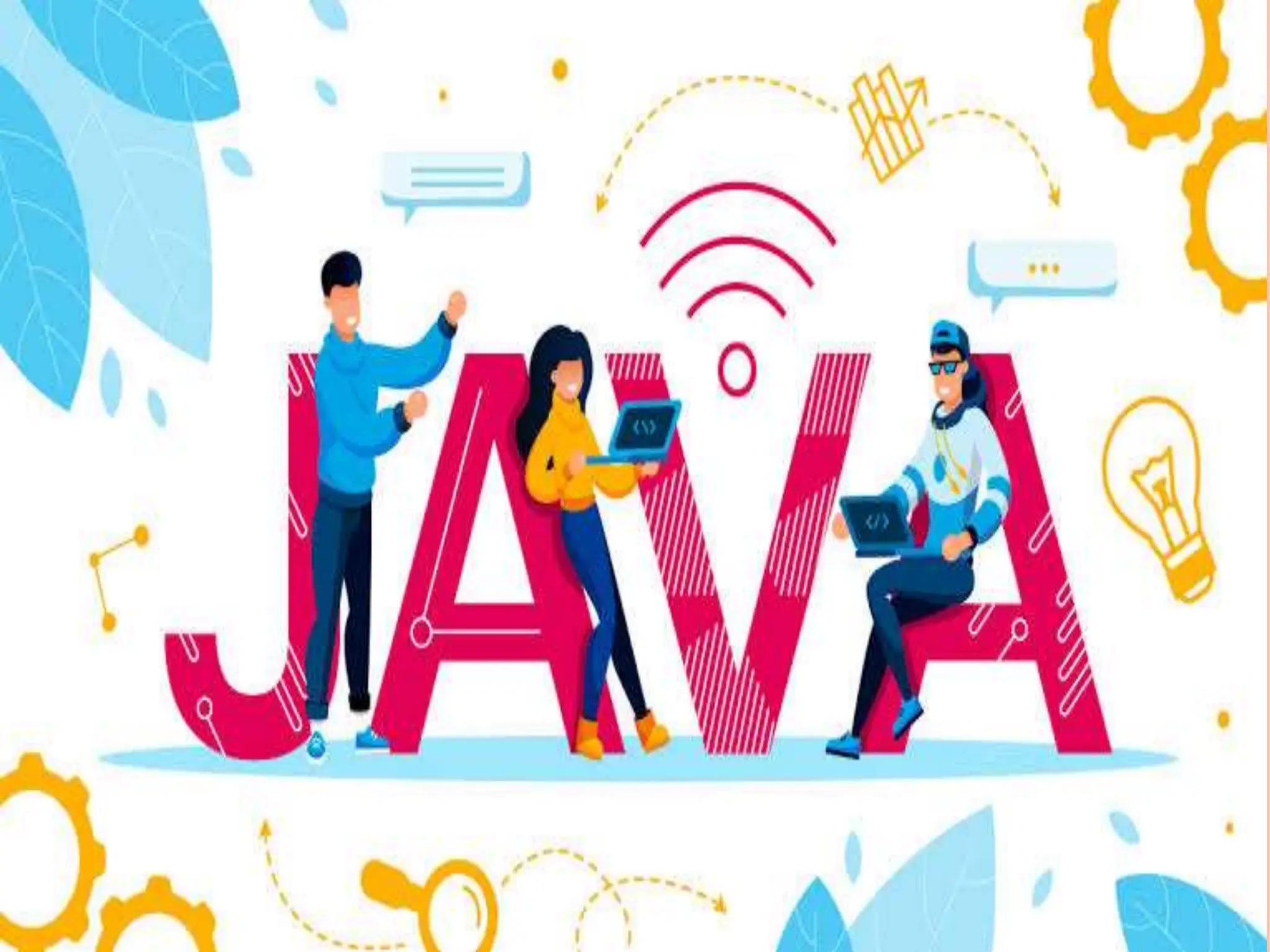
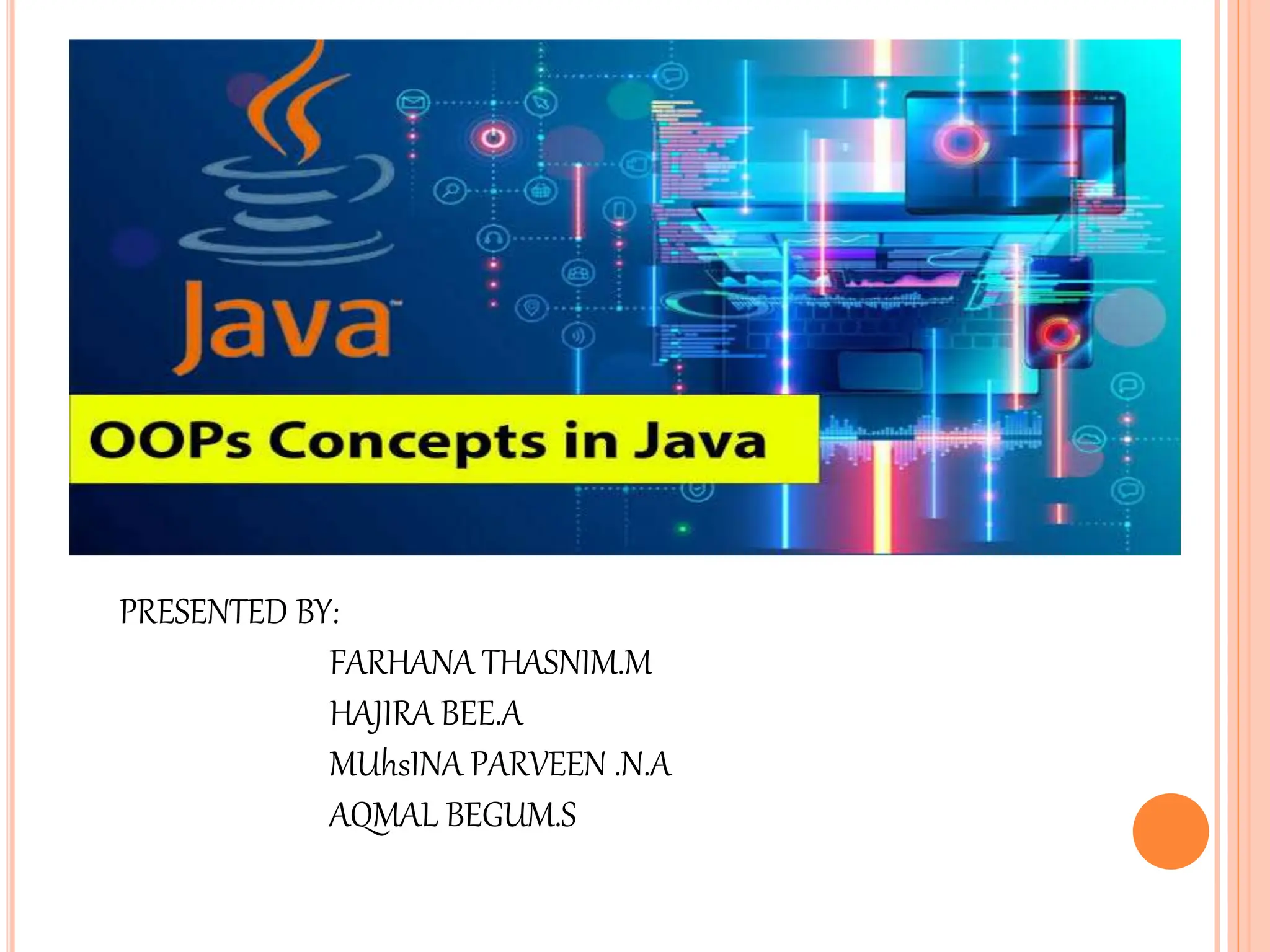
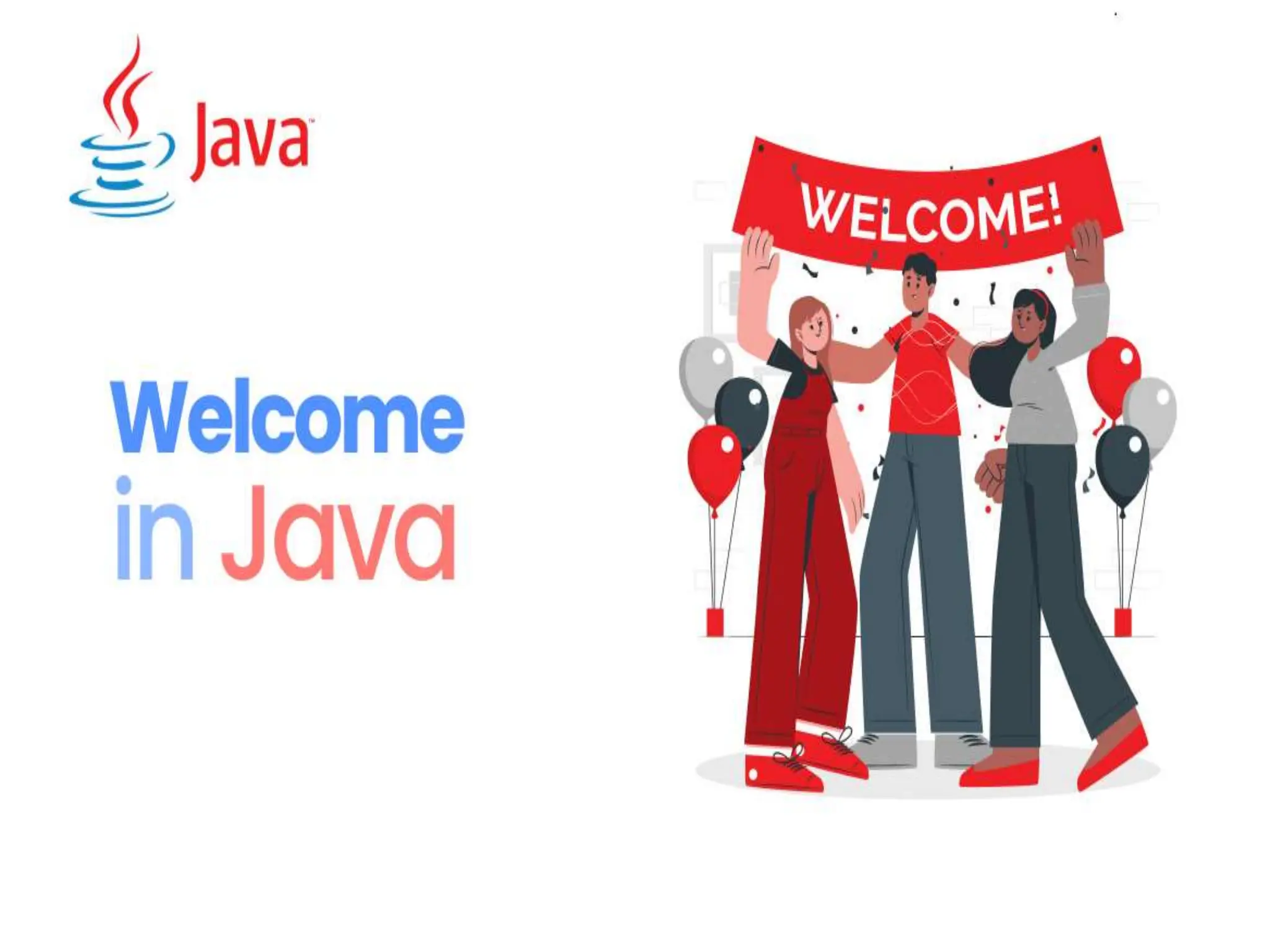
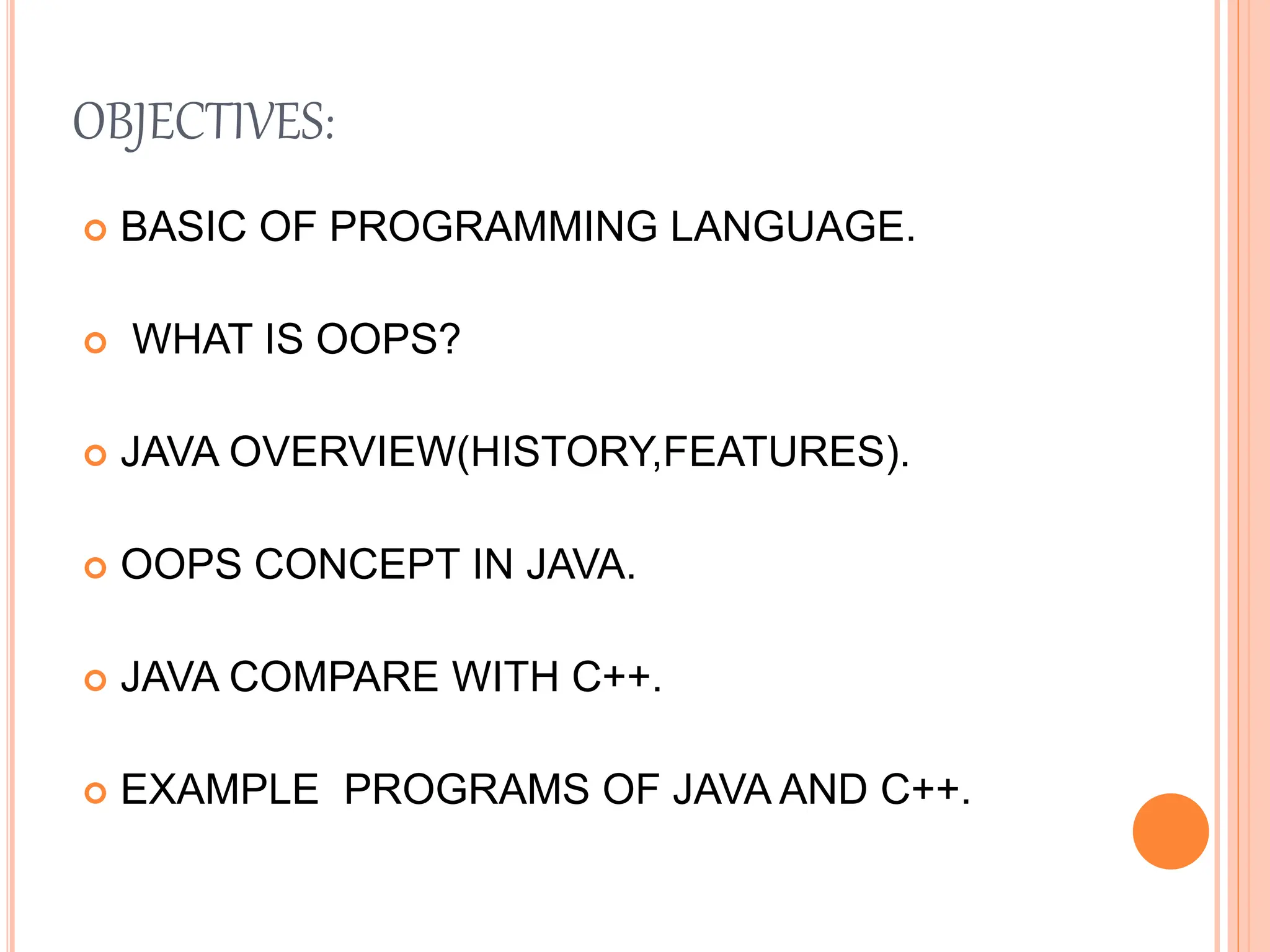
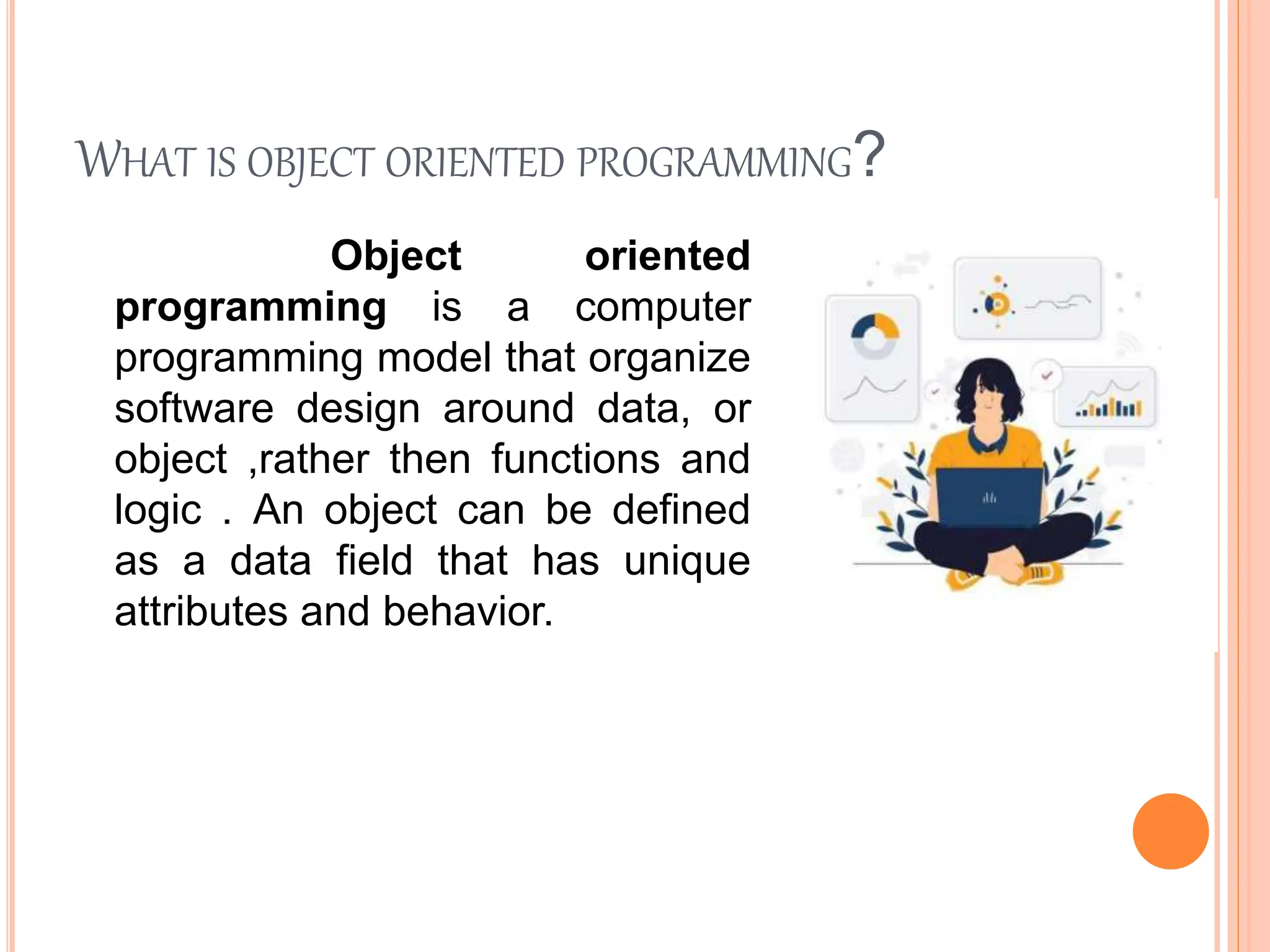
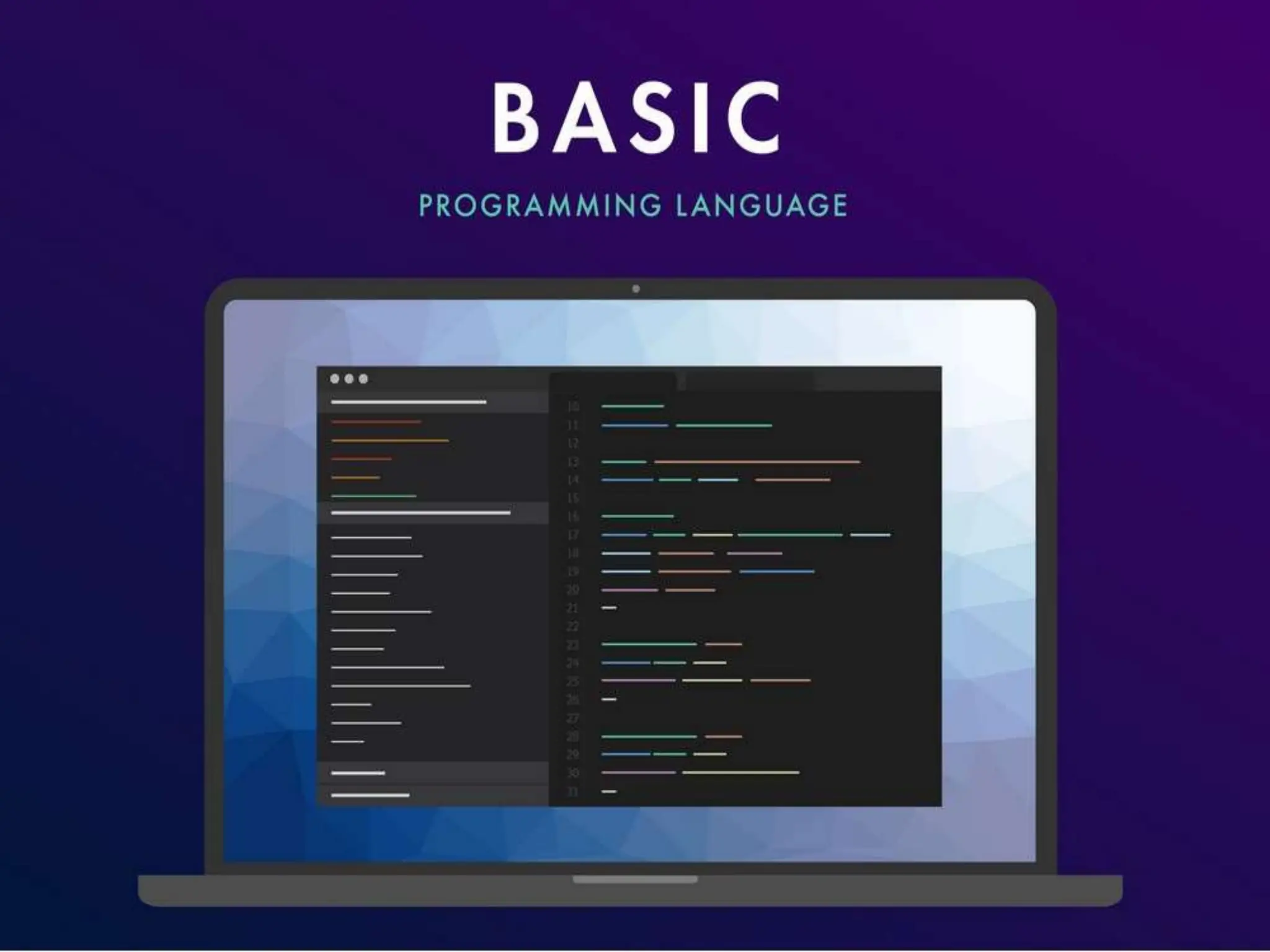
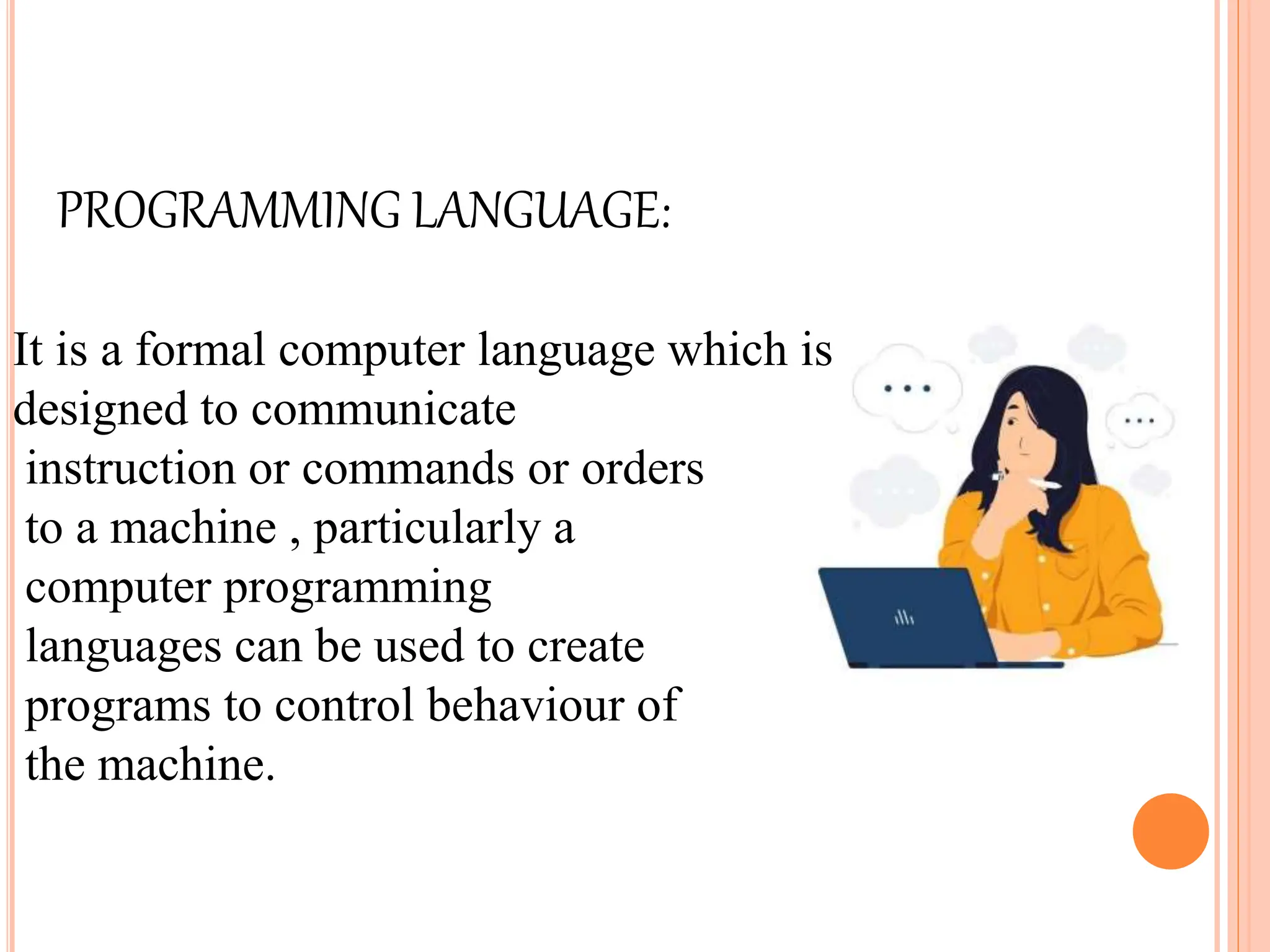
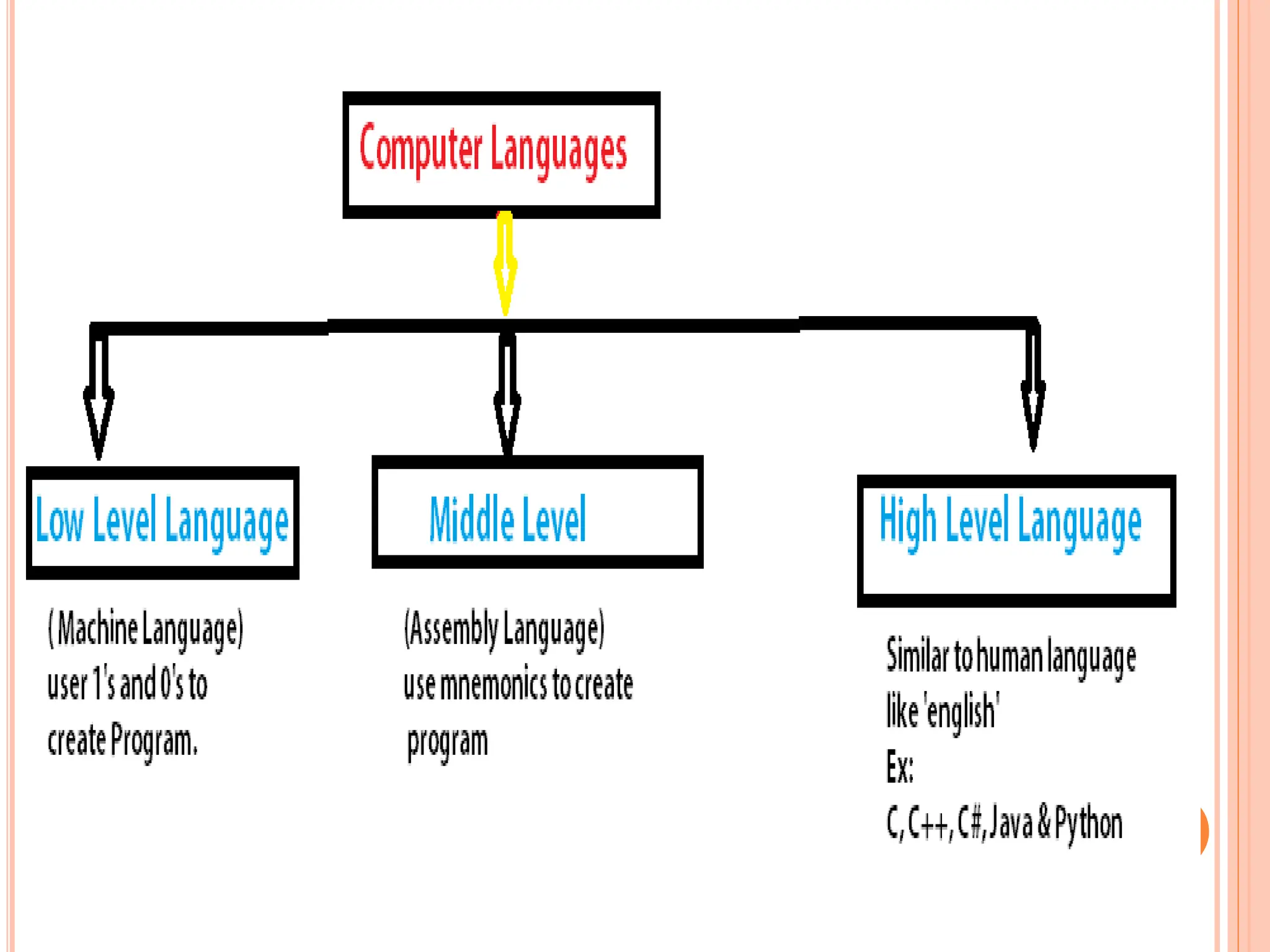
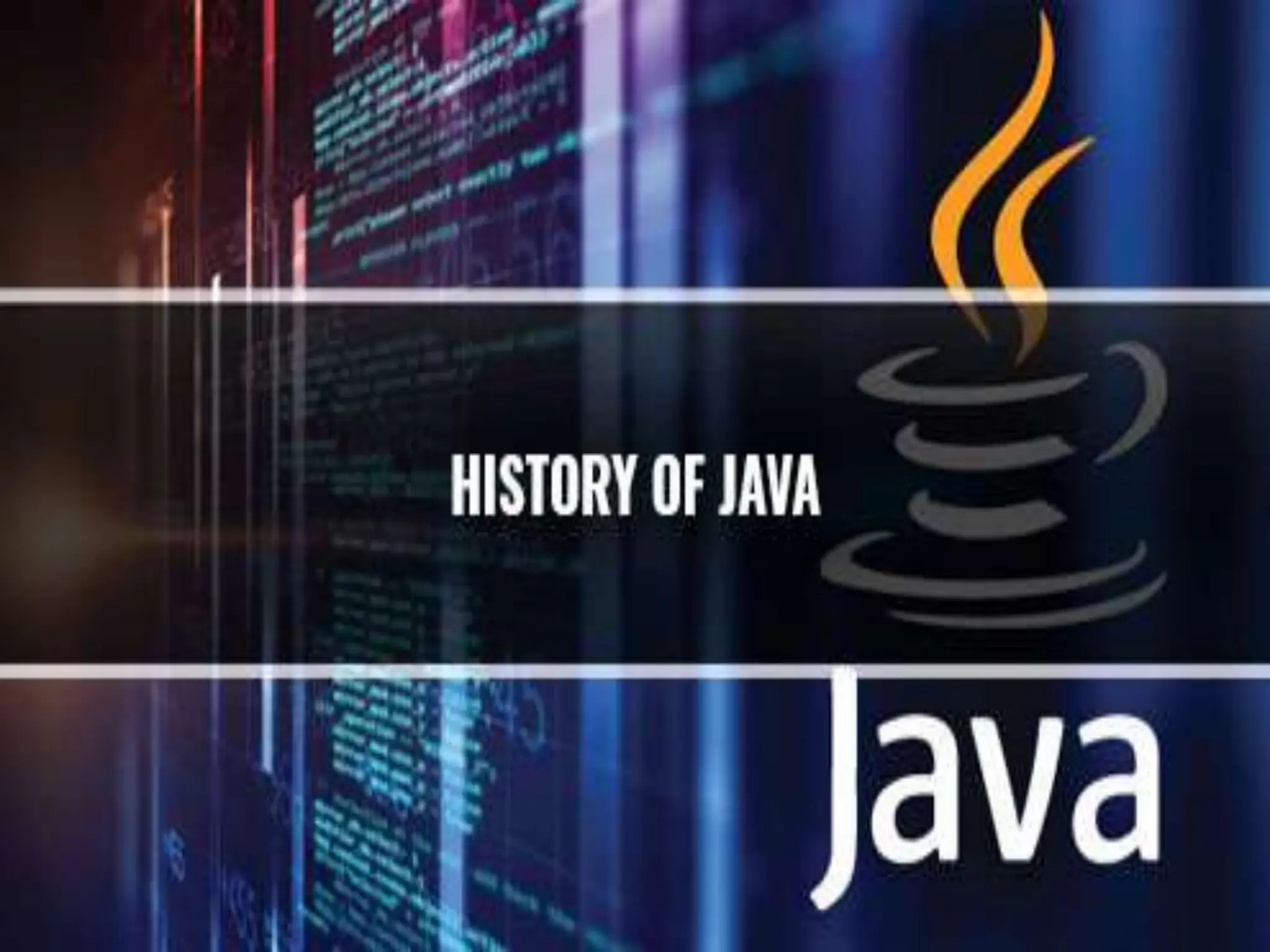
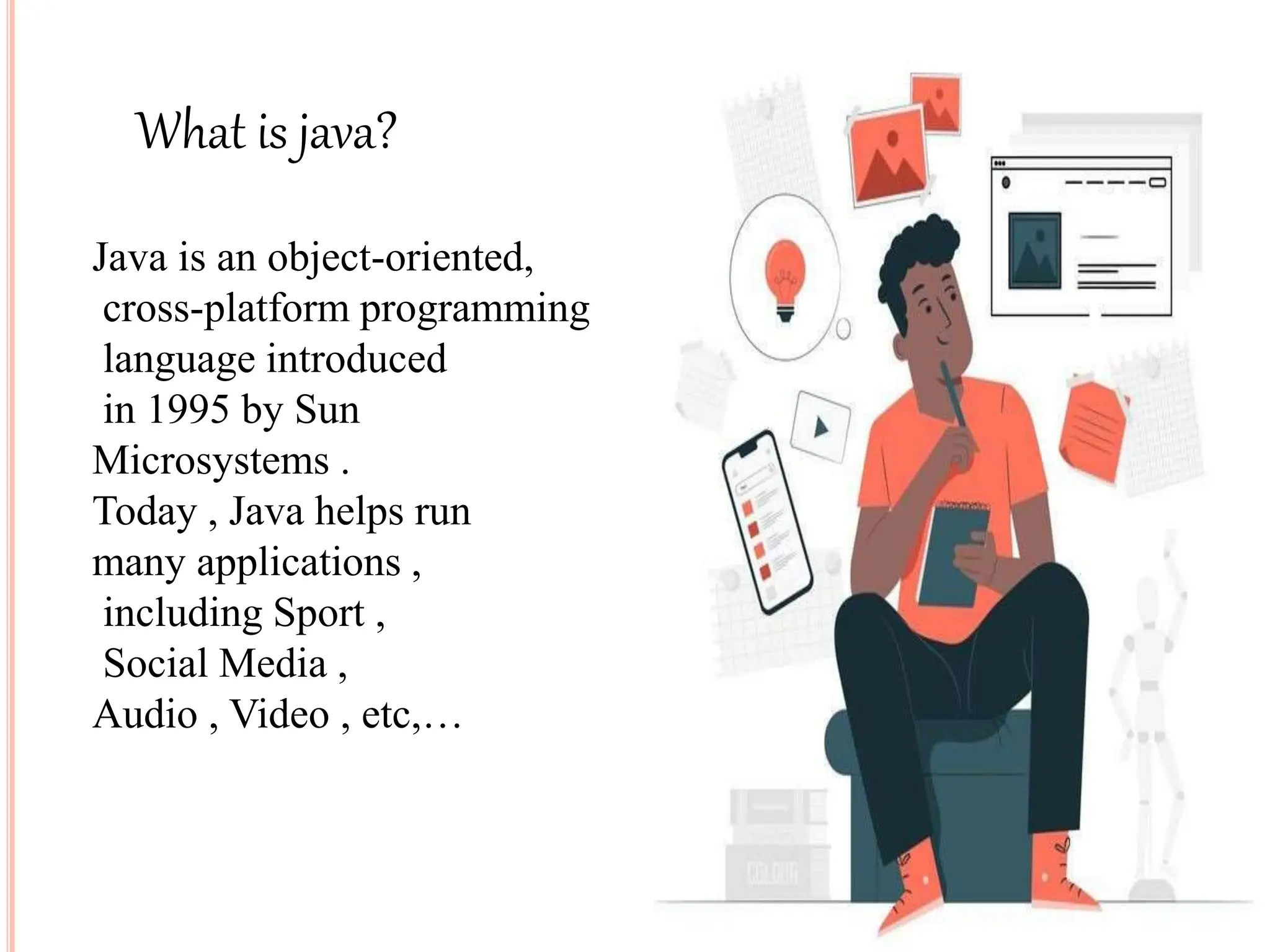
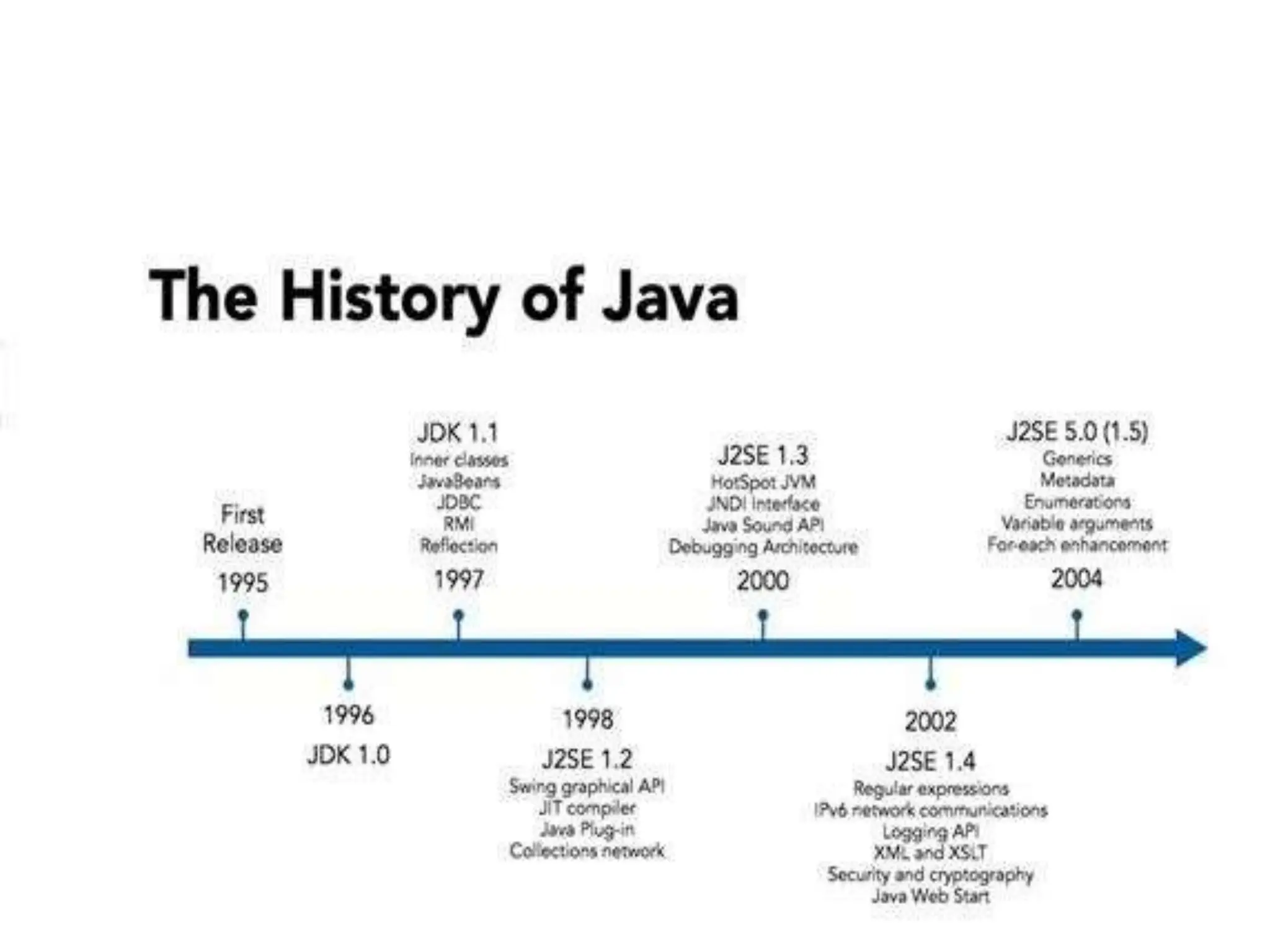
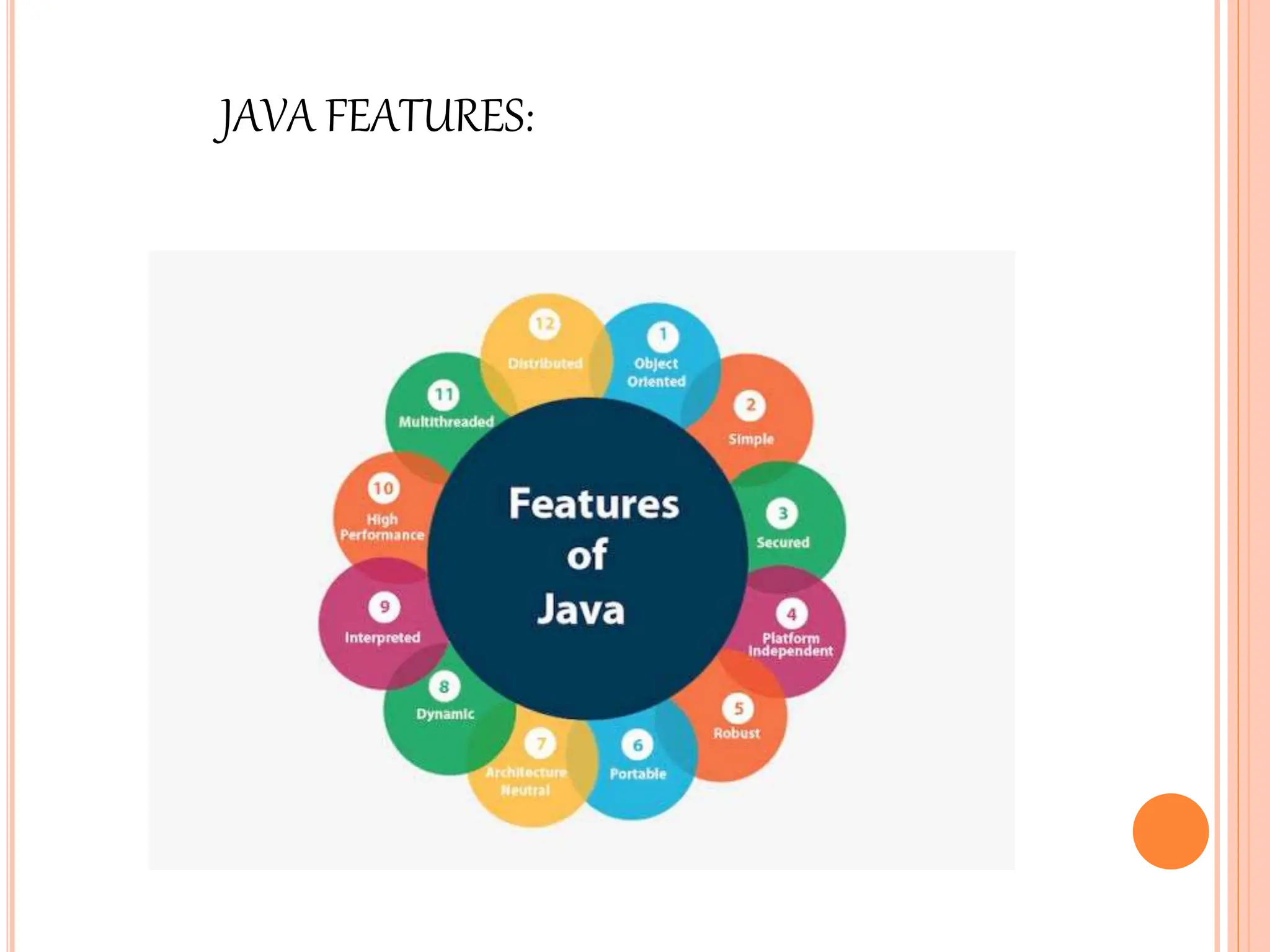
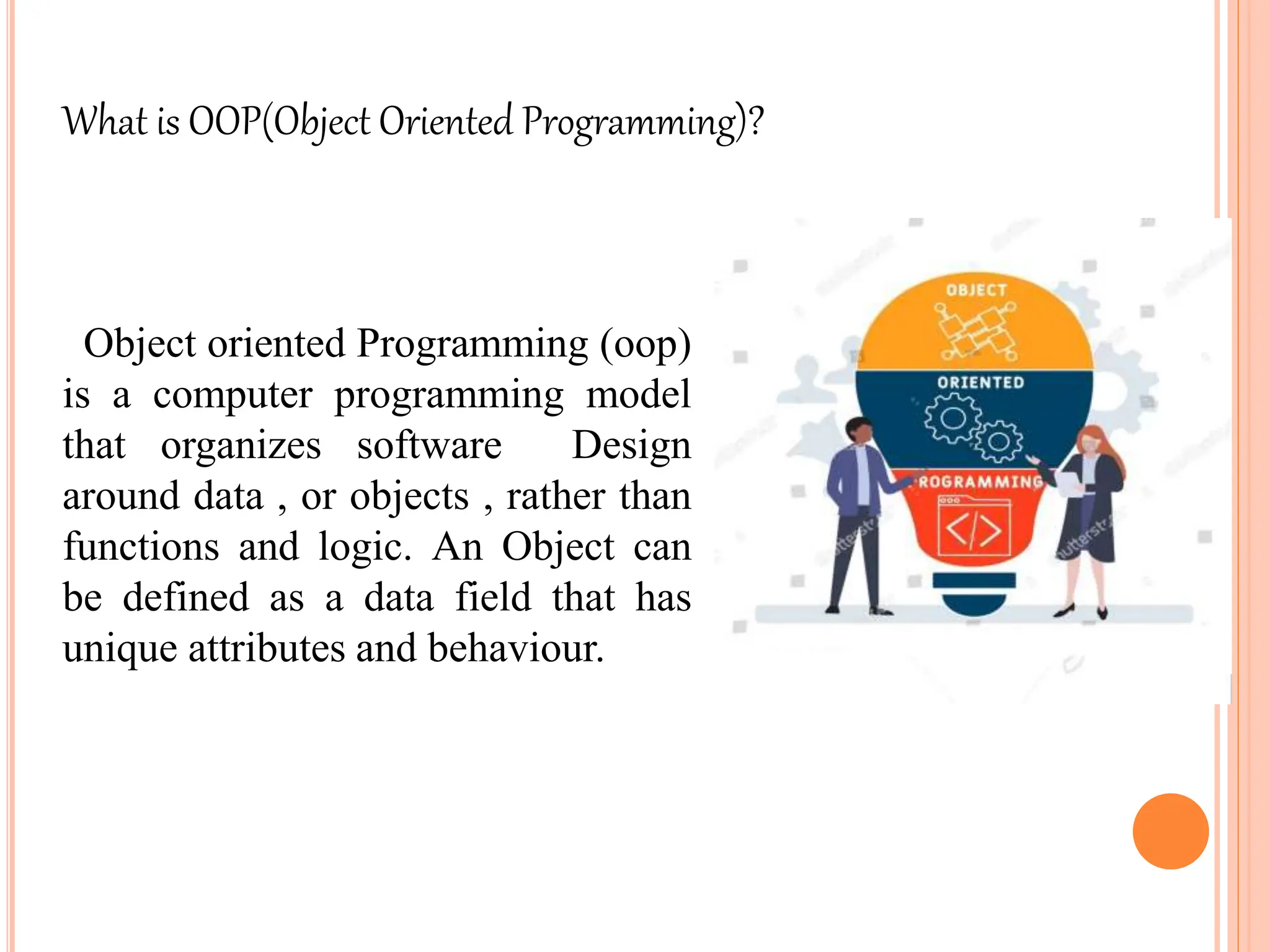
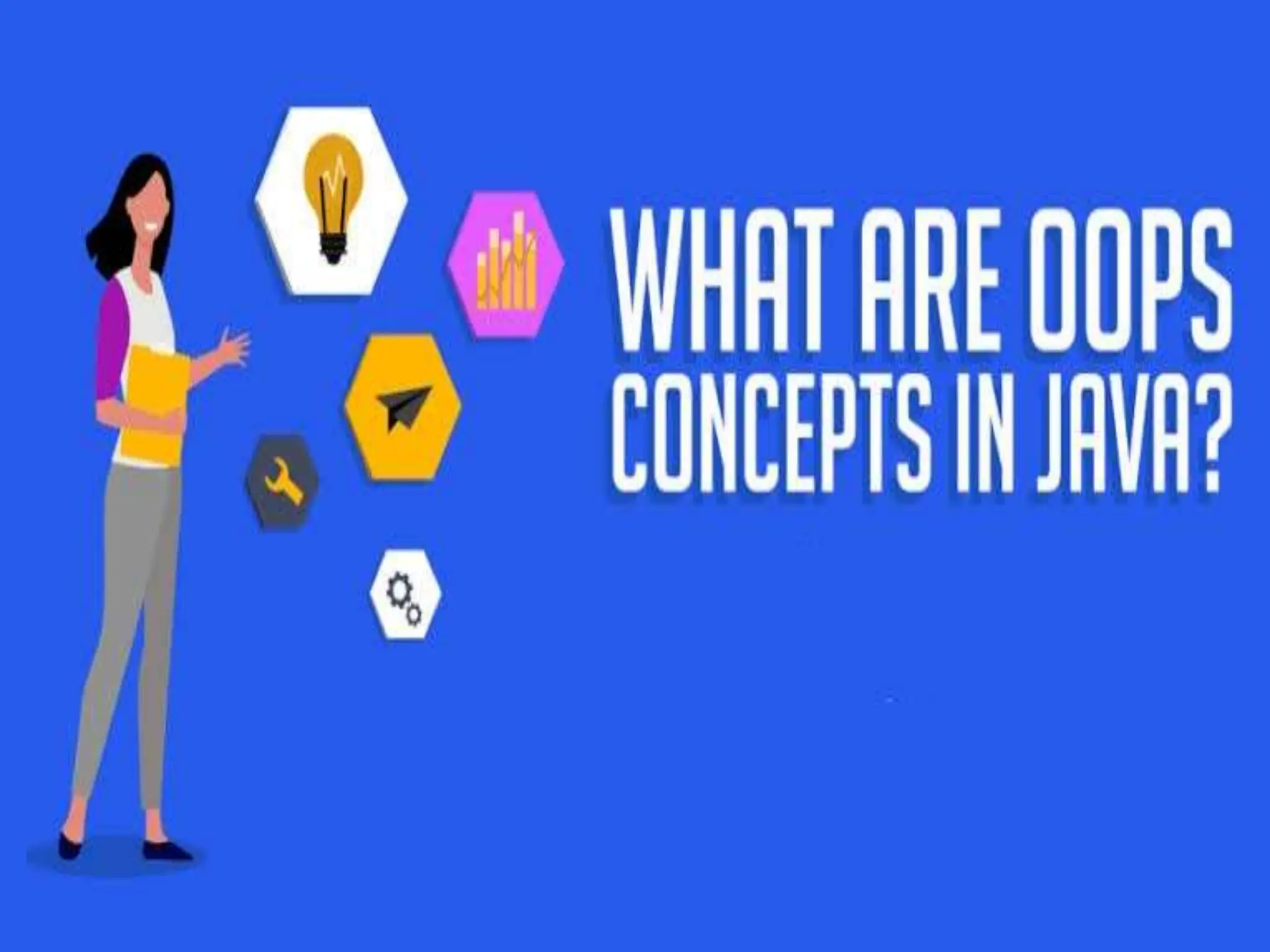
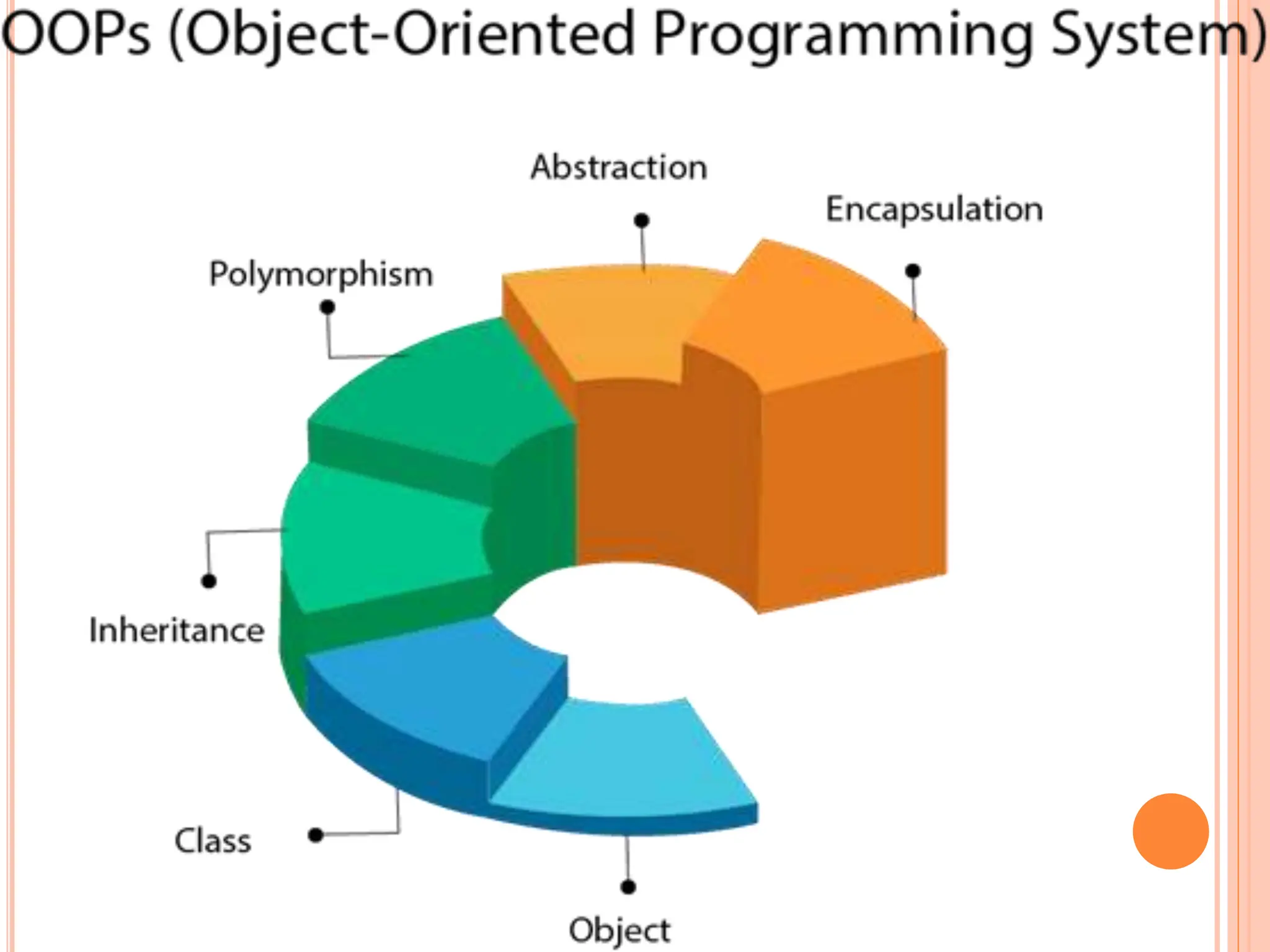
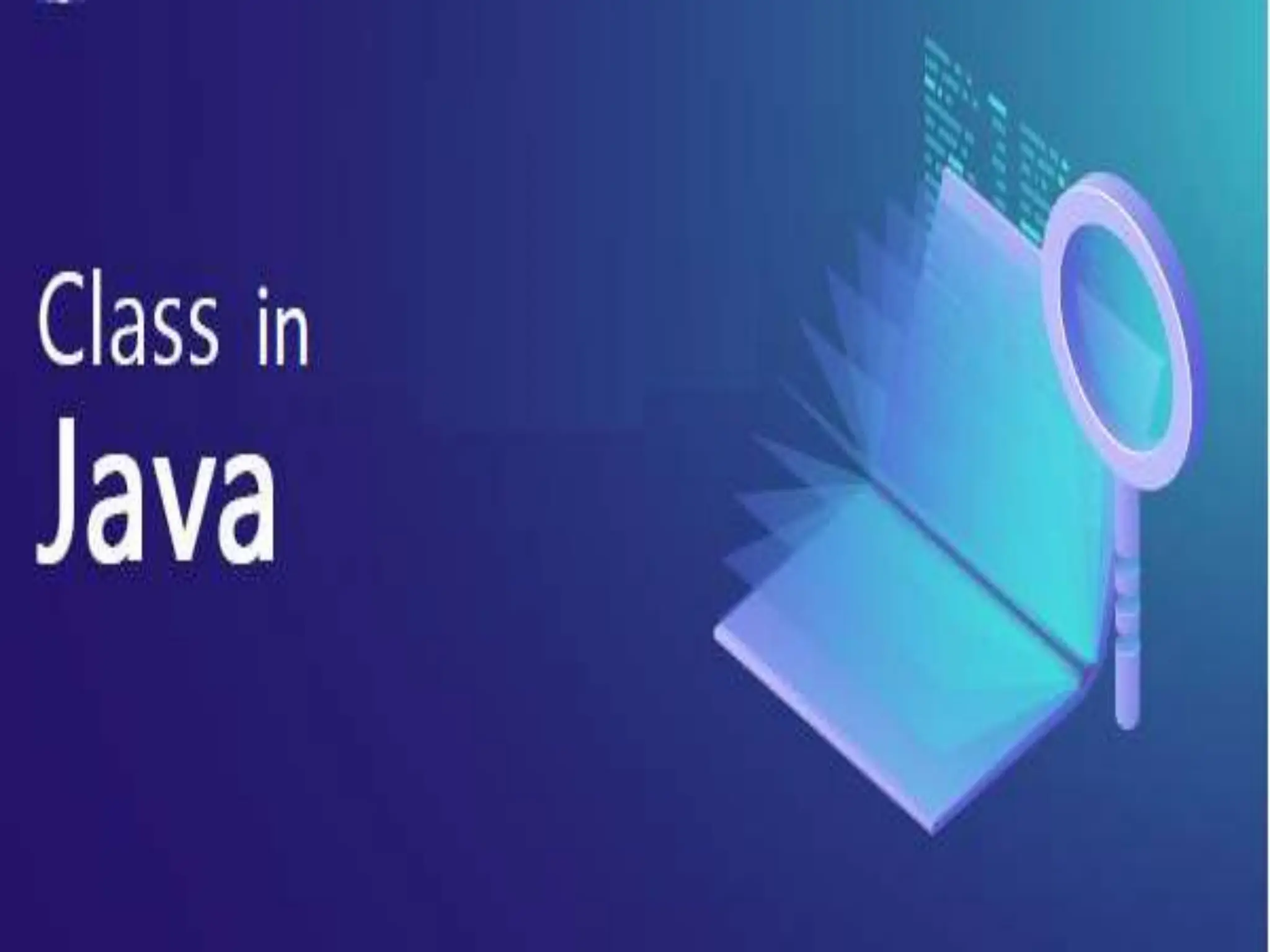
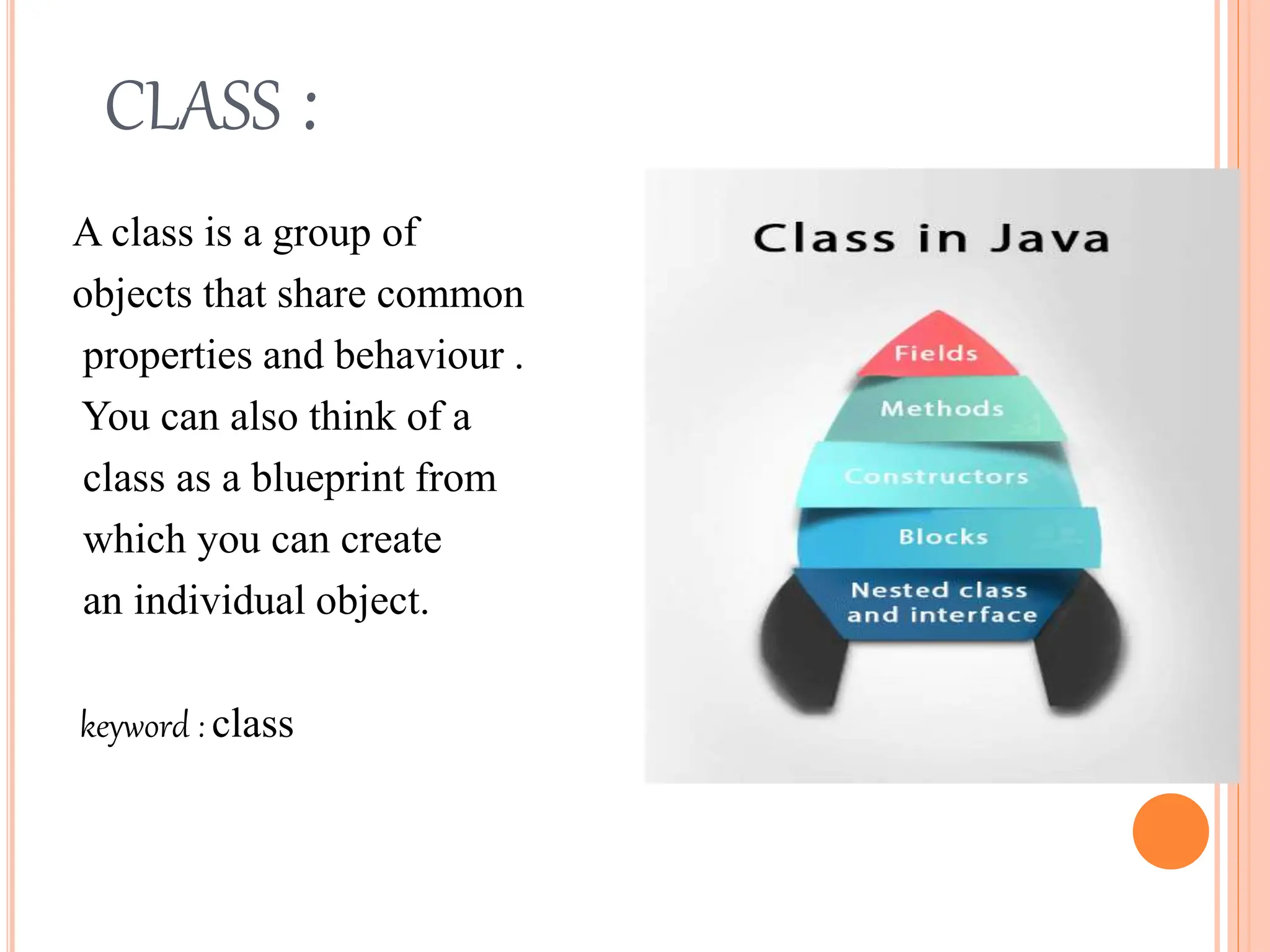
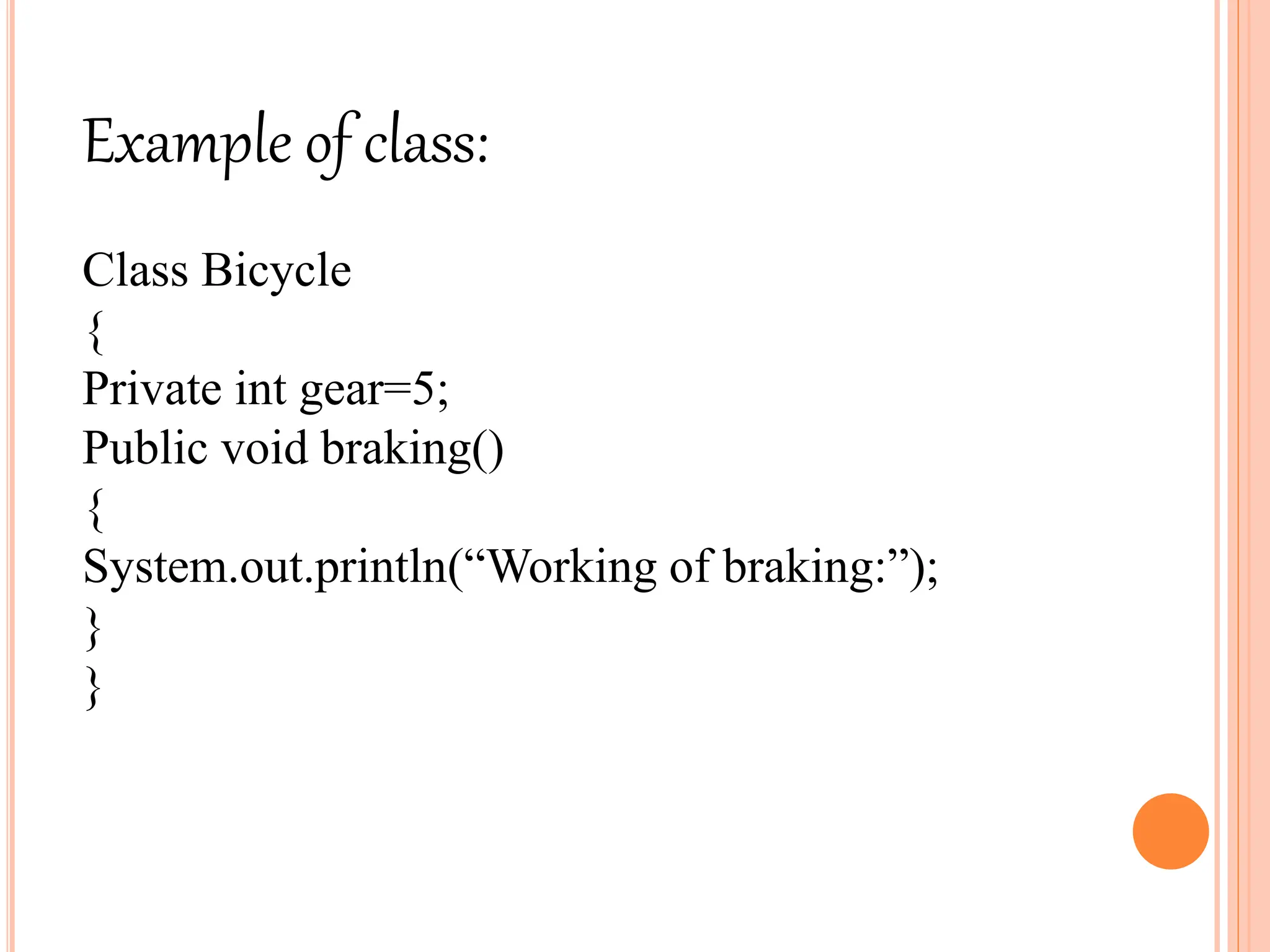
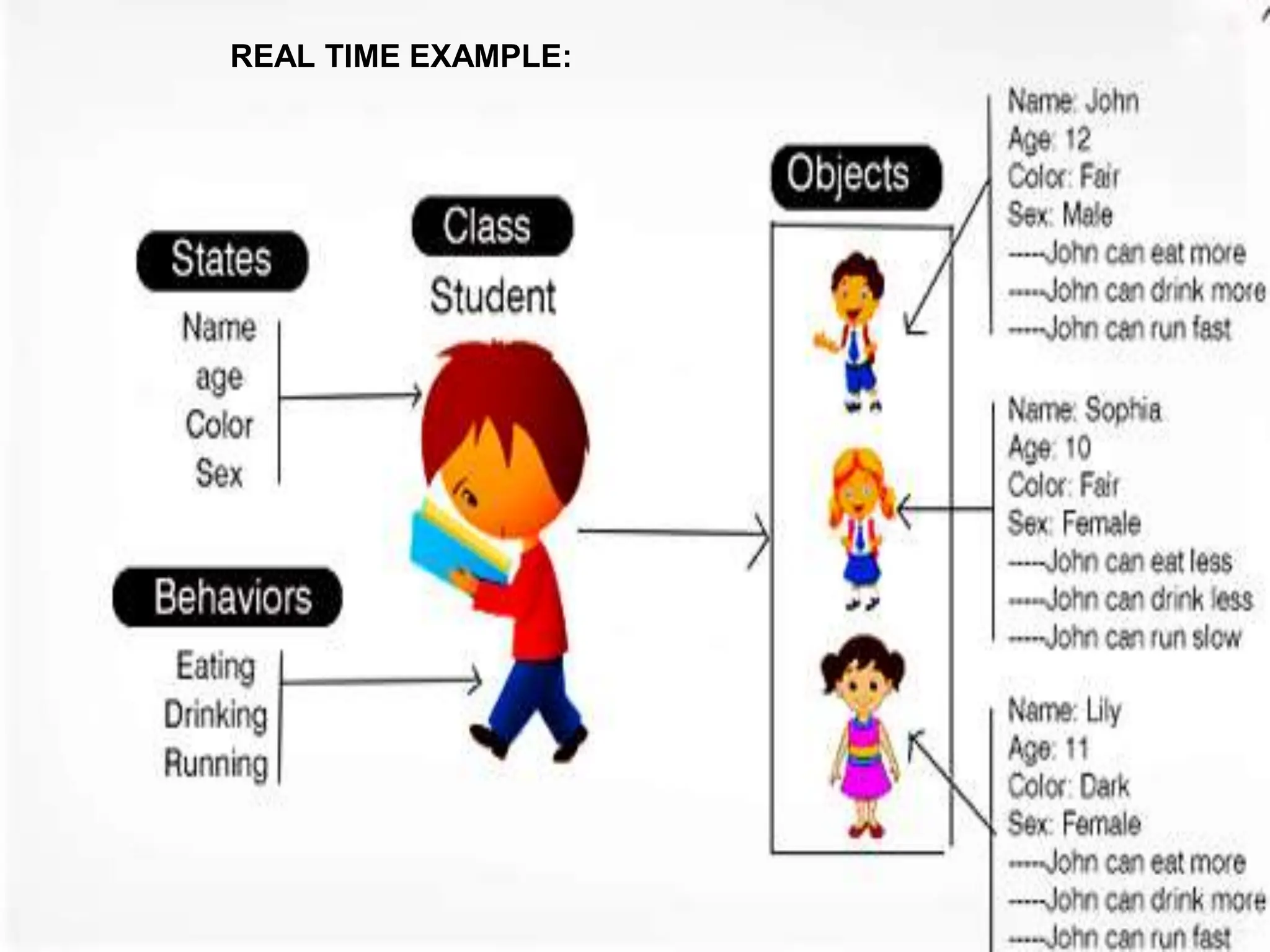
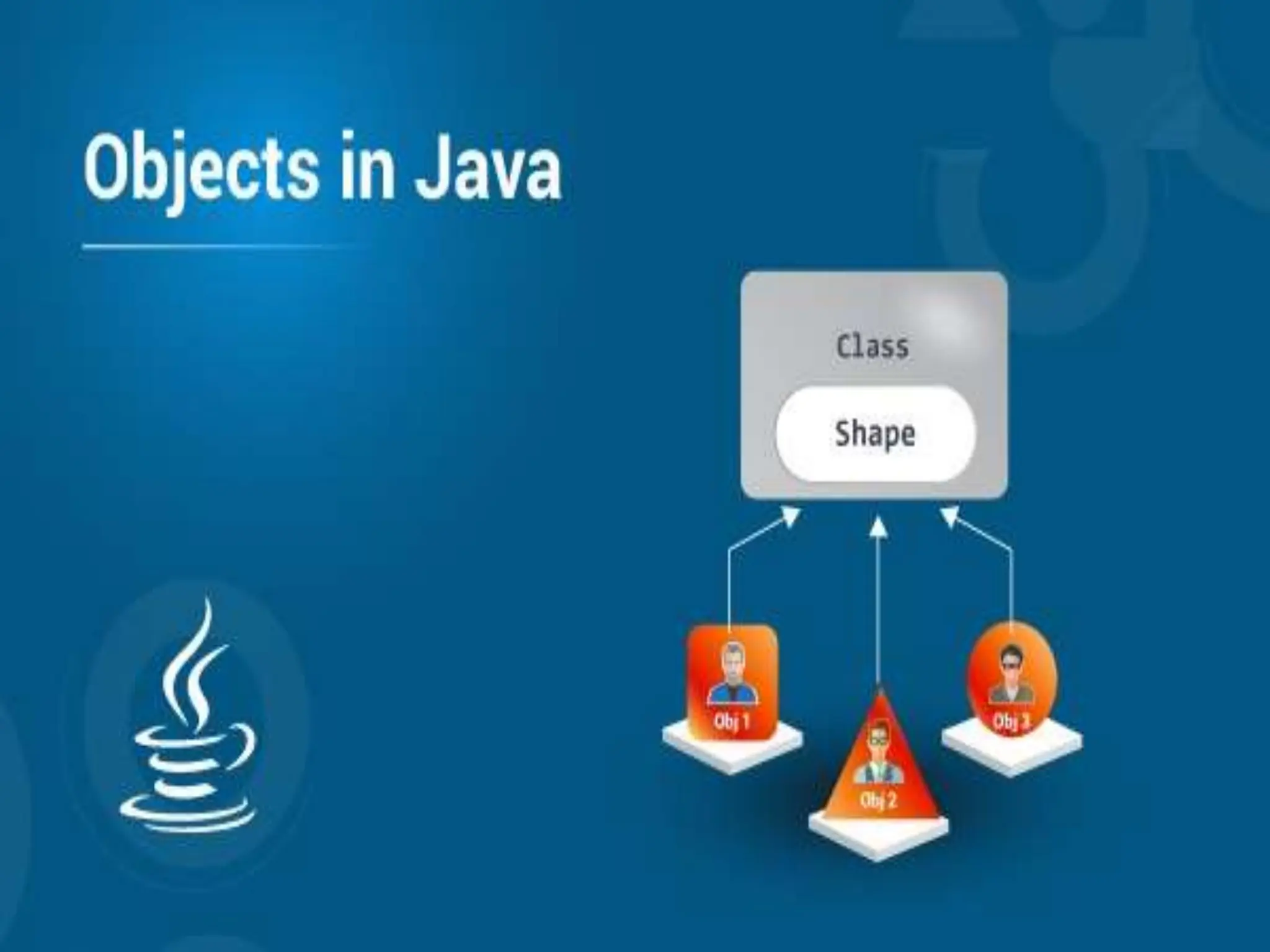
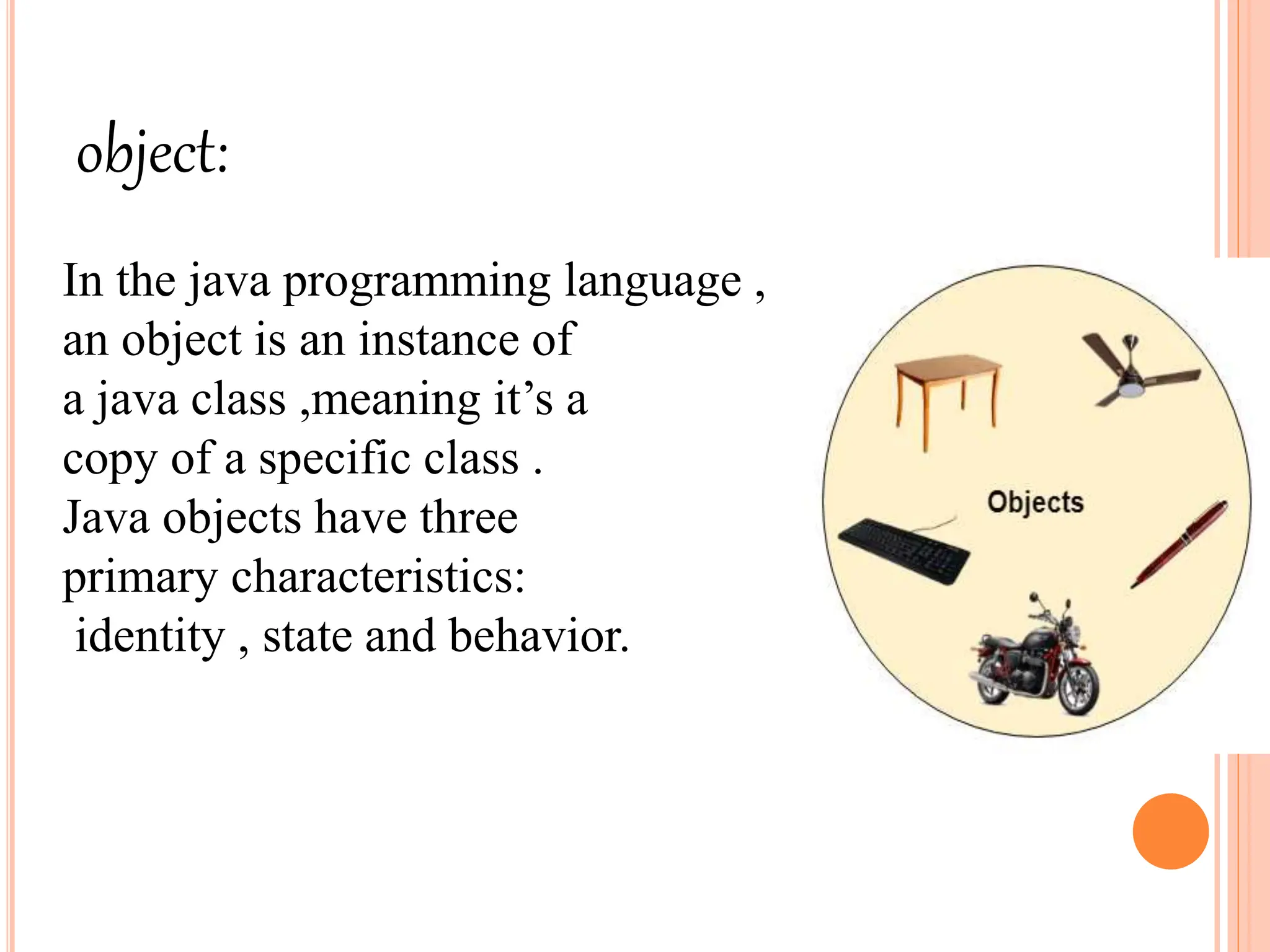
![EXAMPLE OF OBJECT:
Create an object called "myObj" and print the value of
x:
public class Main
{
int x = 5;
public static void main(String[] args)
{
Main myObj = new Main();
System.out.println(myObj.x);
}
}](https://image.slidesharecdn.com/oops-240205162422-b2fb31a6/75/object-oriented-programming-concept-in-java-pptx-22-2048.jpg)
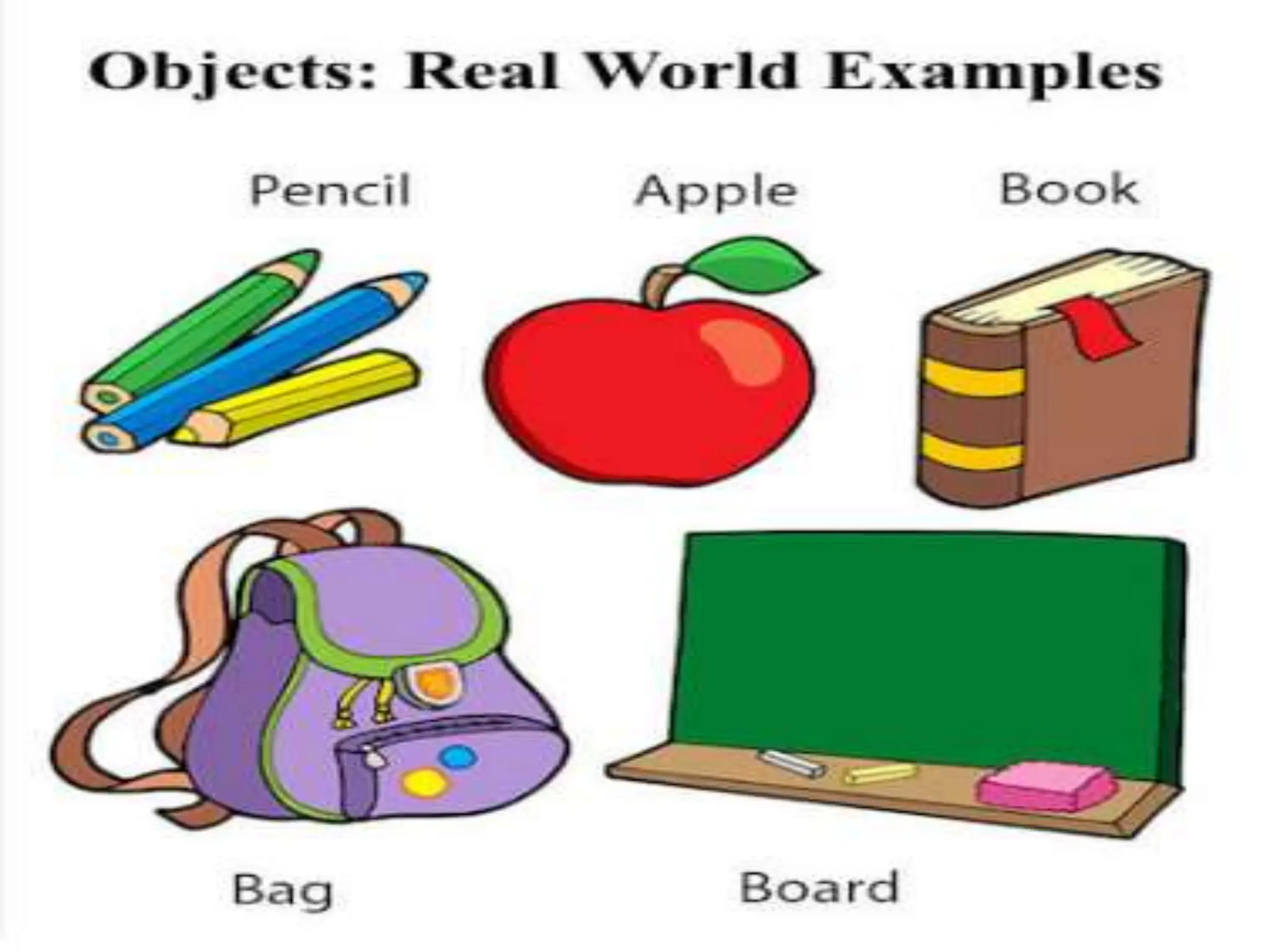
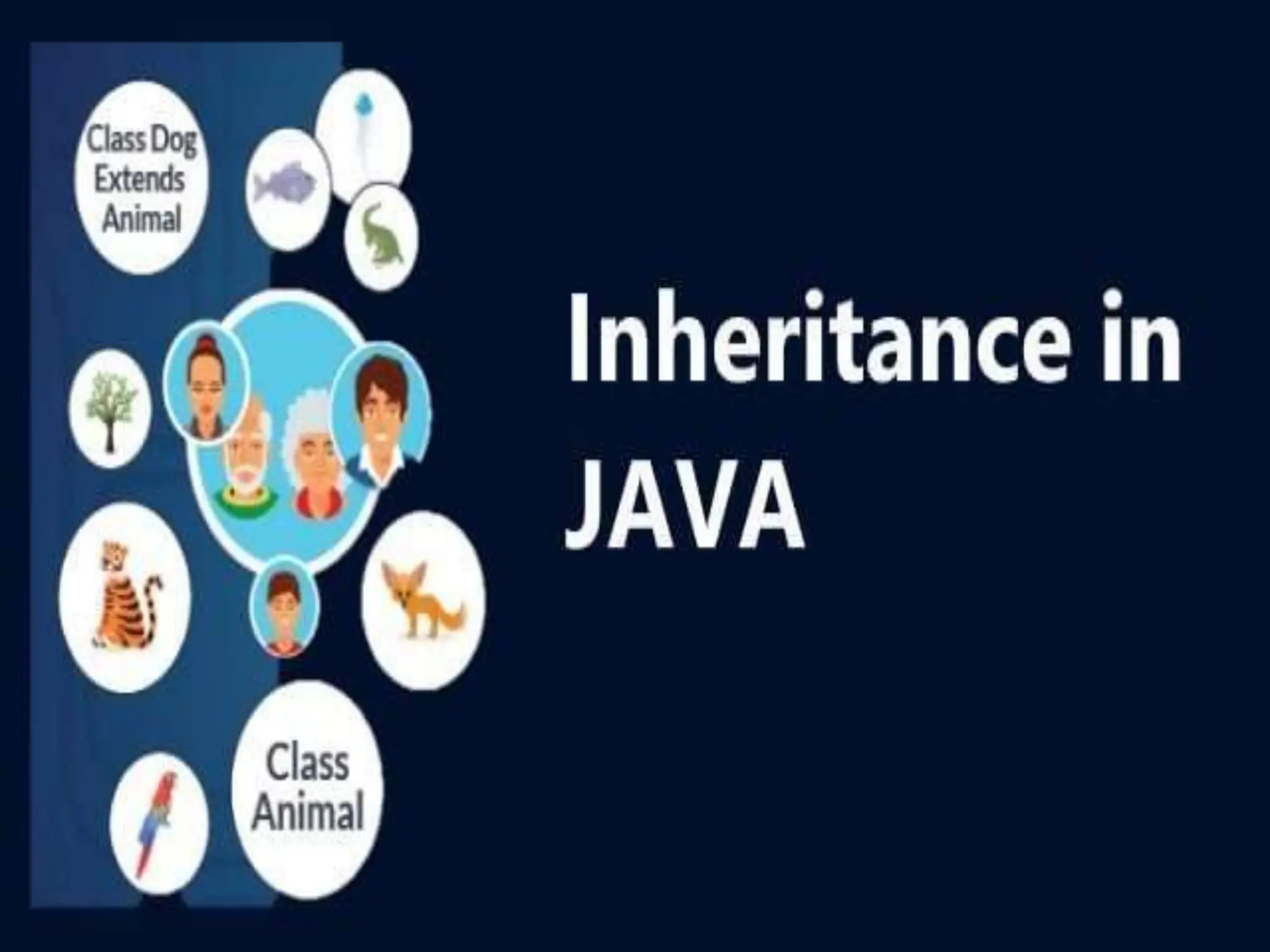
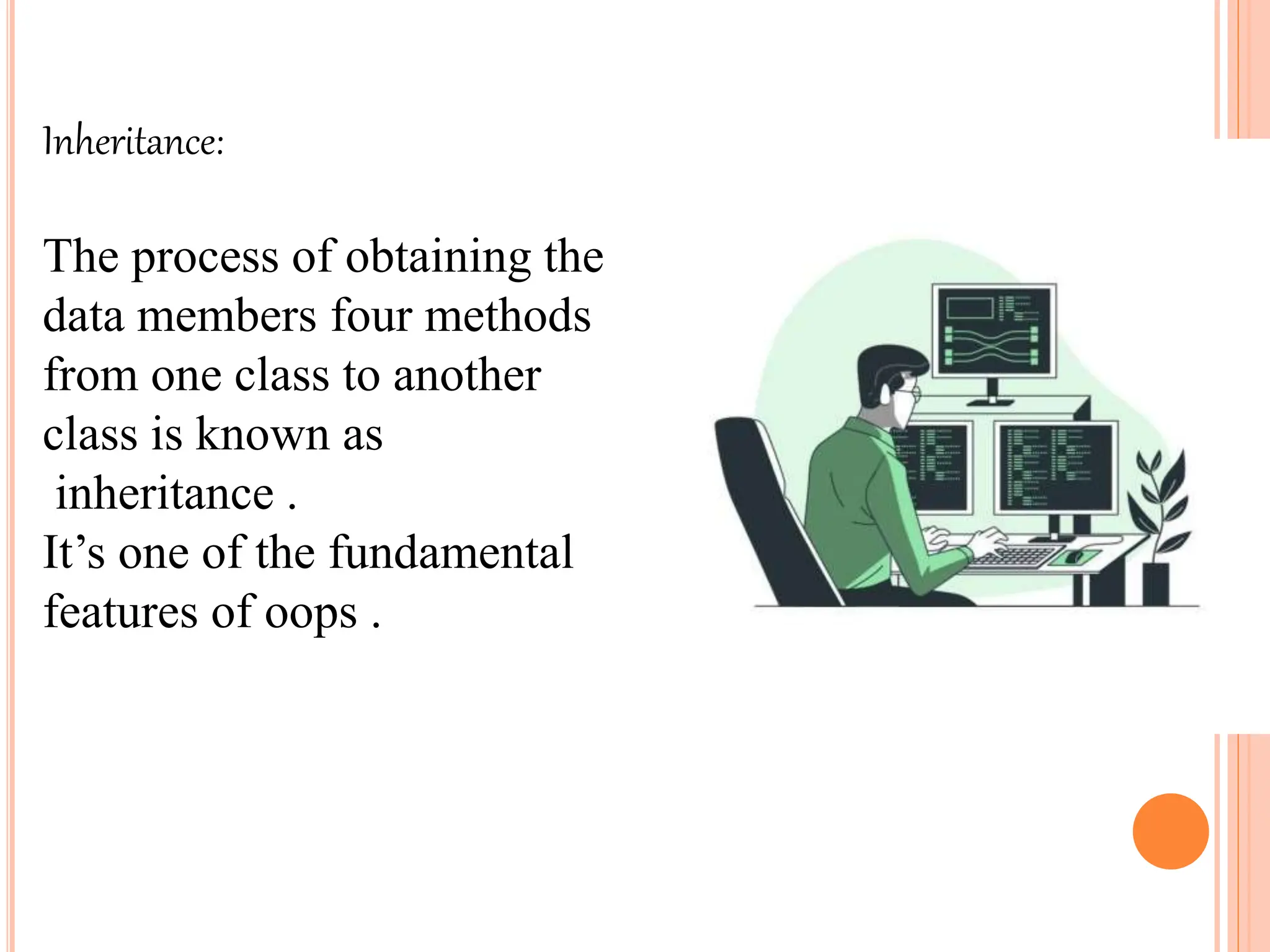
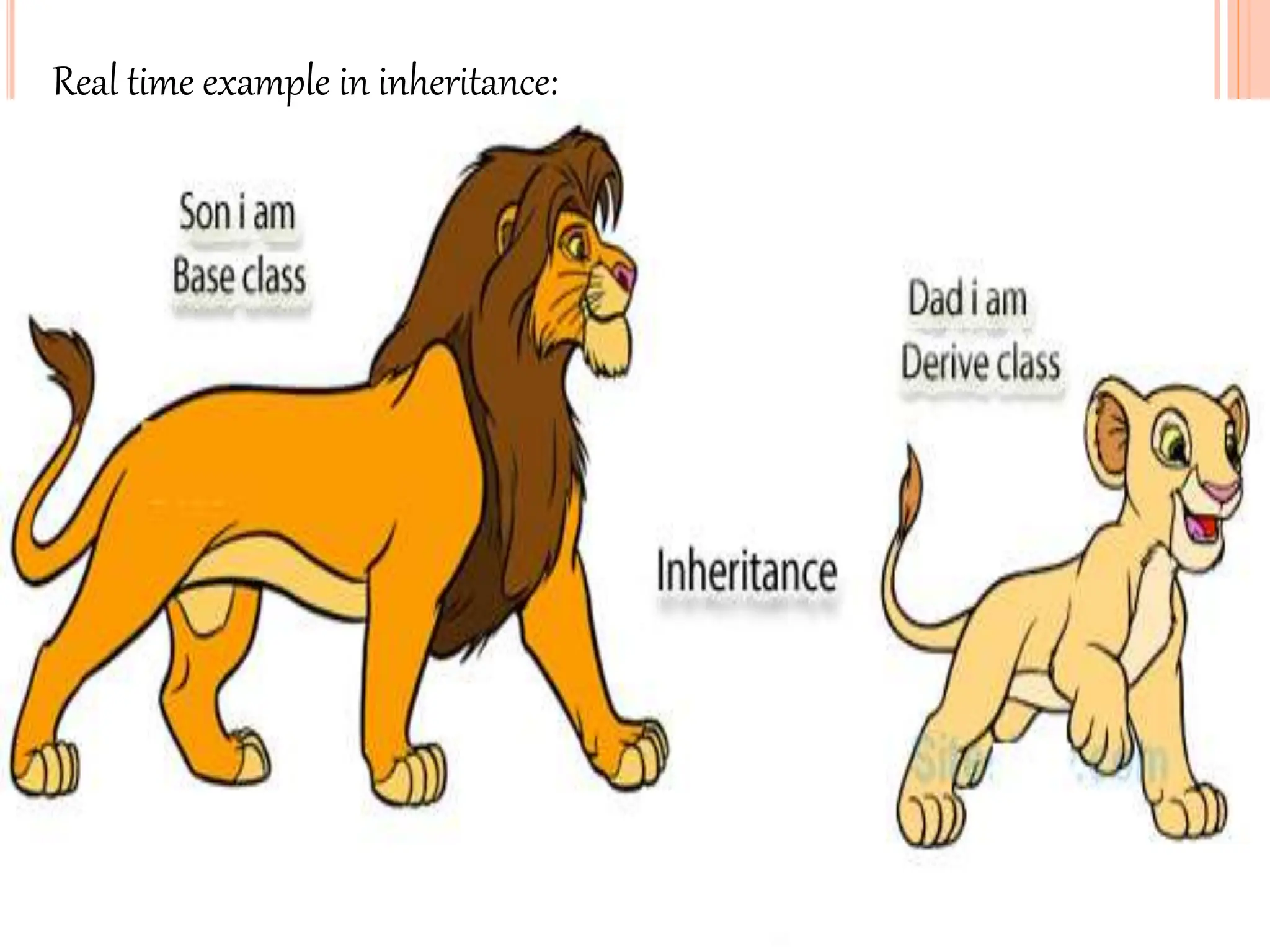
![Example of inheritance:
Class Employee
{
Float salary=40000;
}
Class programmer extends Employee
{
int bonus= 10000;
Public static void main(String [] args)
{
Programmer P =new programmer();
System.out.println(“programmer salary is :”+p.salary);
System.out.println(”Bonus of programmer is :”+p.bonus);
}
}](https://image.slidesharecdn.com/oops-240205162422-b2fb31a6/75/object-oriented-programming-concept-in-java-pptx-27-2048.jpg)
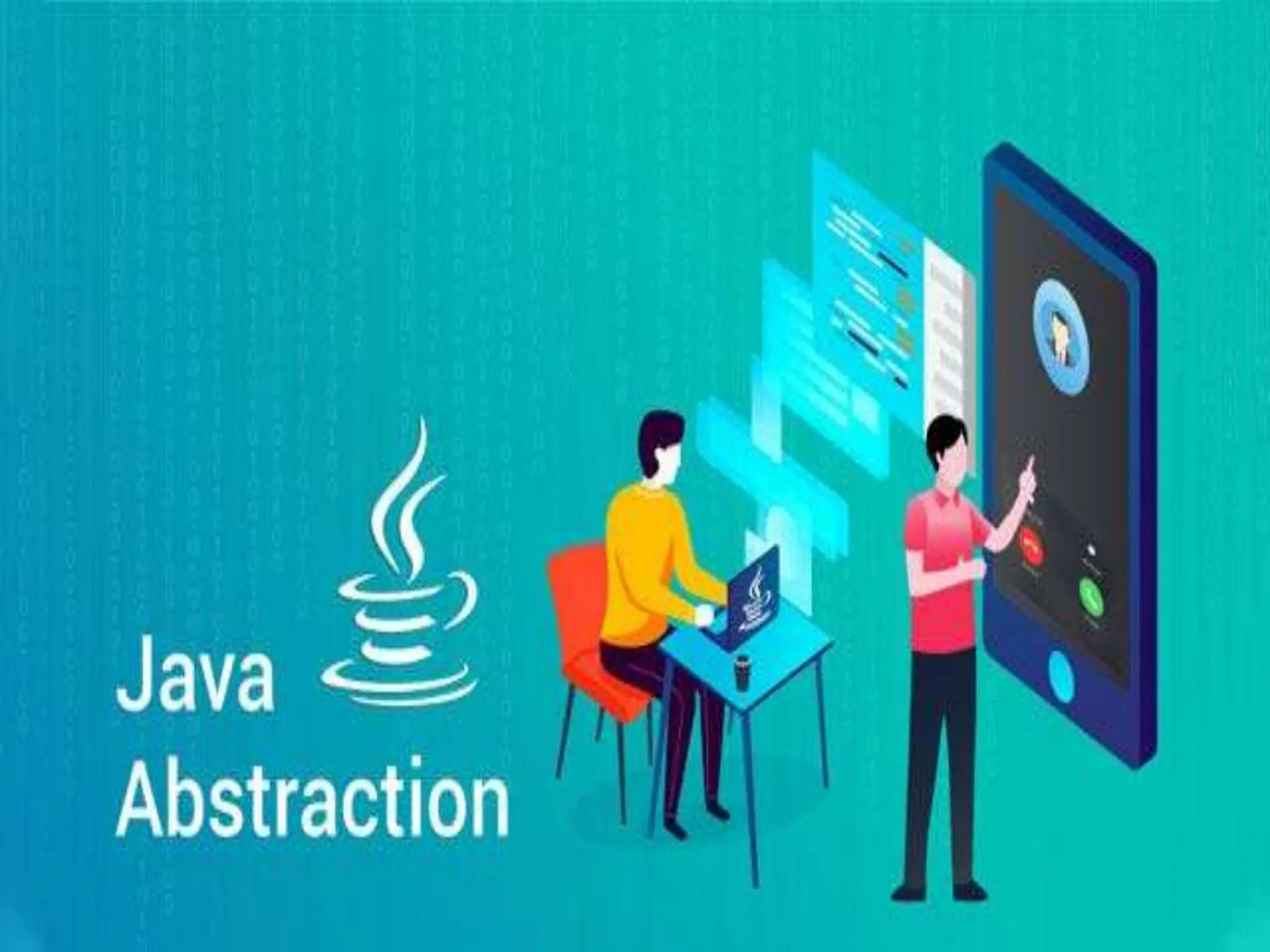

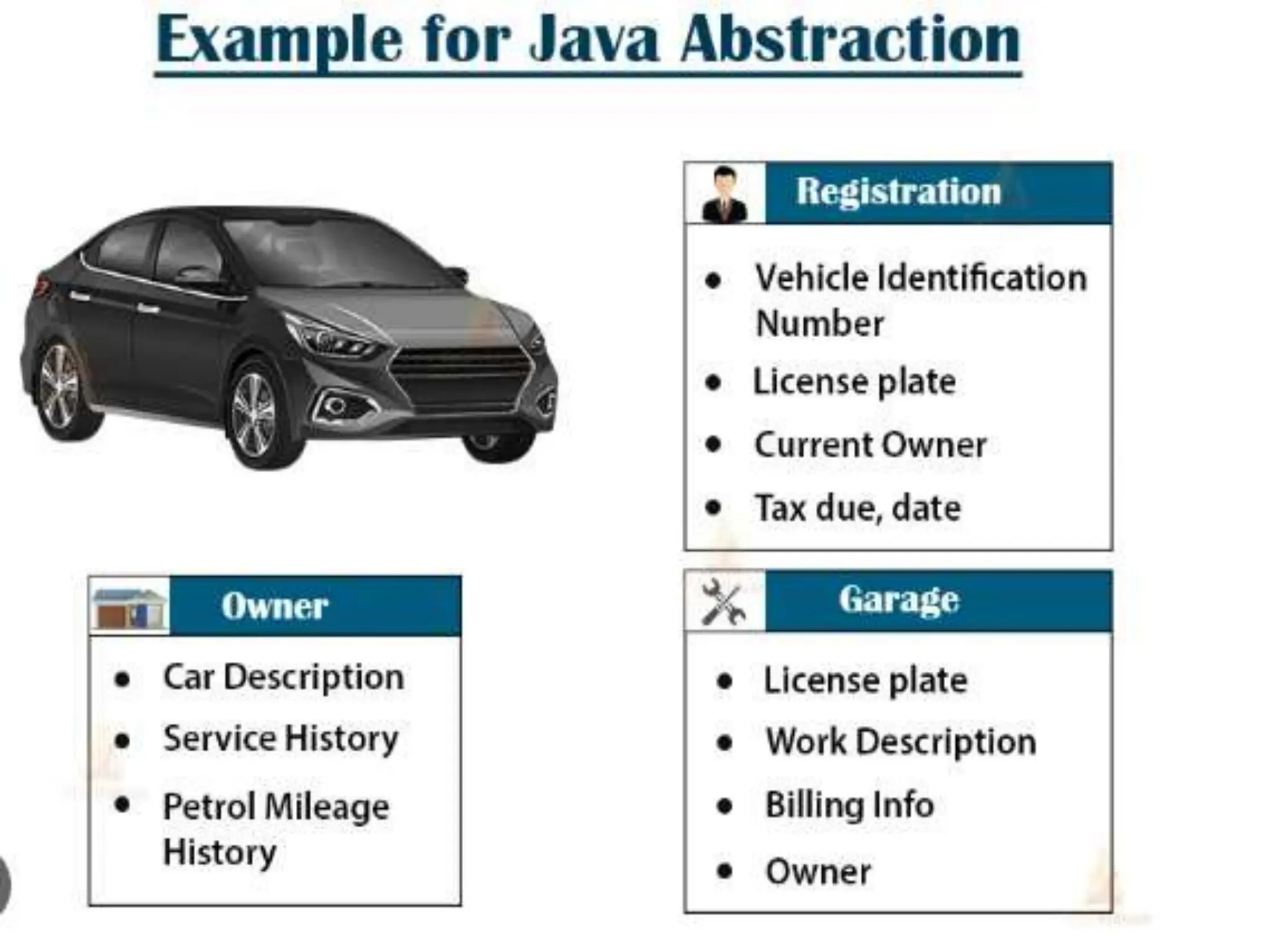
![Example of Abstract class that has an abstract method
abstract class Bike
{
abstract void run();
}
class Honda4 extends Bike
{
void run(){System.out.println("running safely");}
public static void main(String args[])
{
Bike obj = new Honda4();
obj.run();
}
}](https://image.slidesharecdn.com/oops-240205162422-b2fb31a6/75/object-oriented-programming-concept-in-java-pptx-31-2048.jpg)
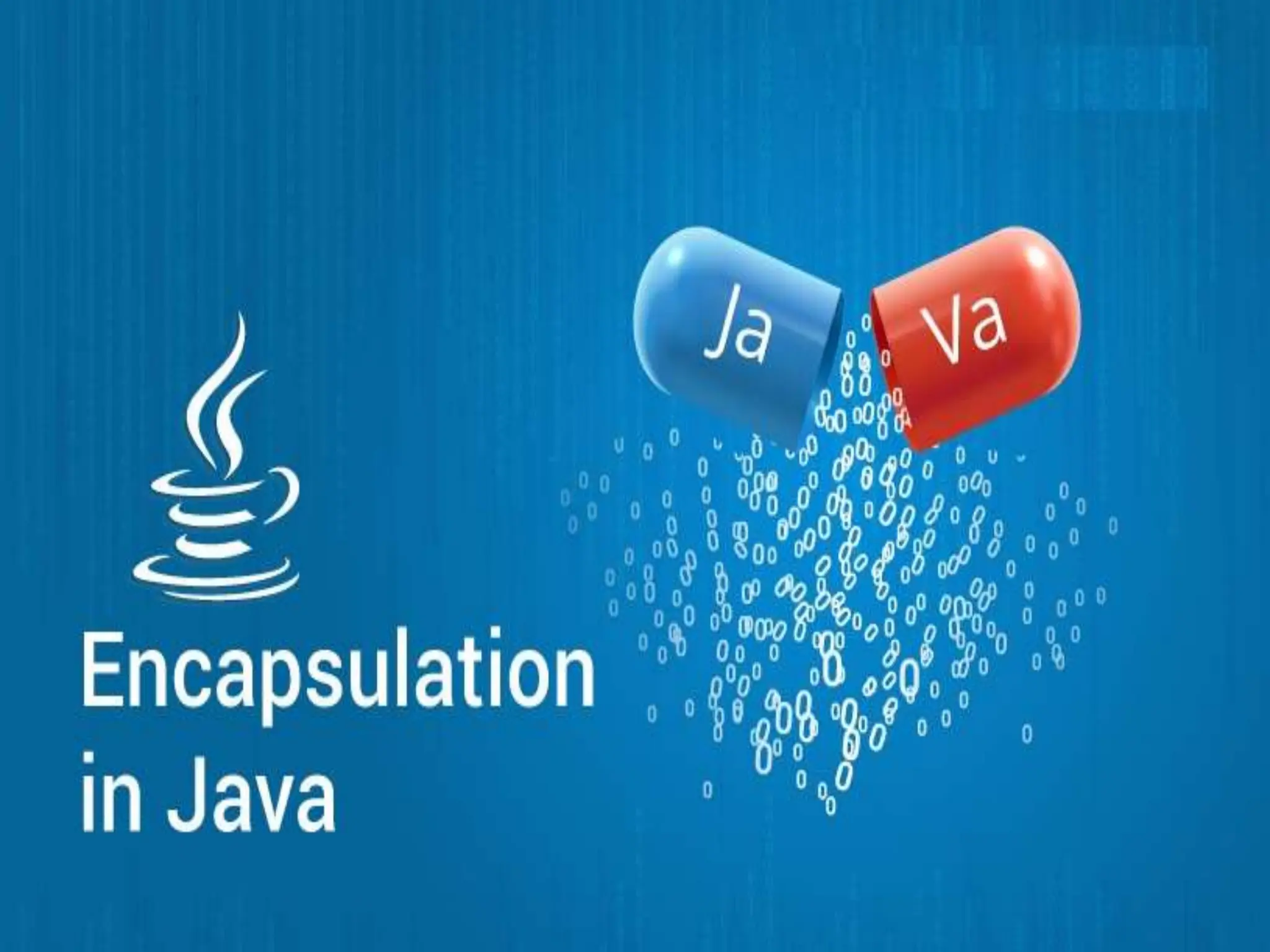
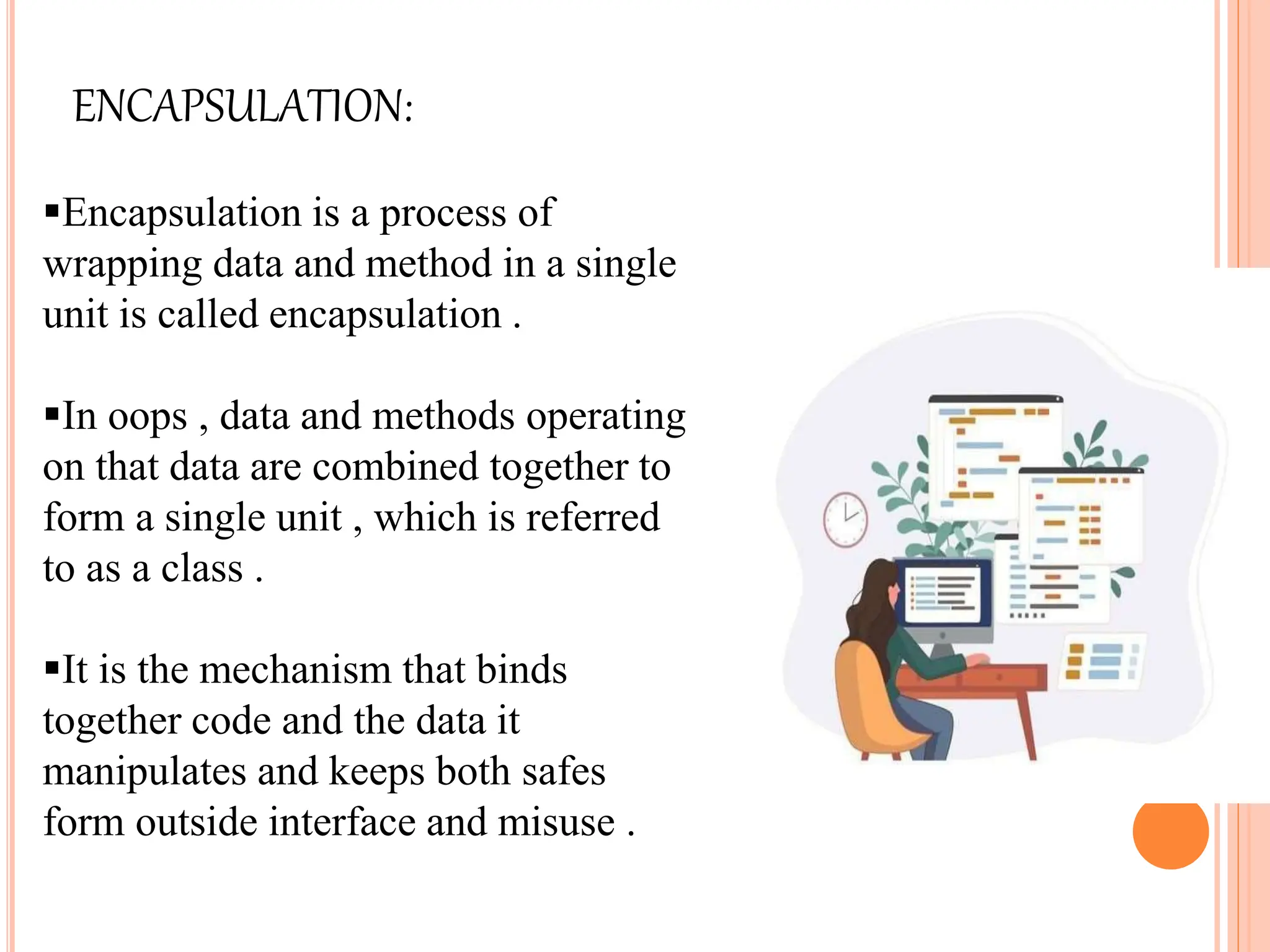
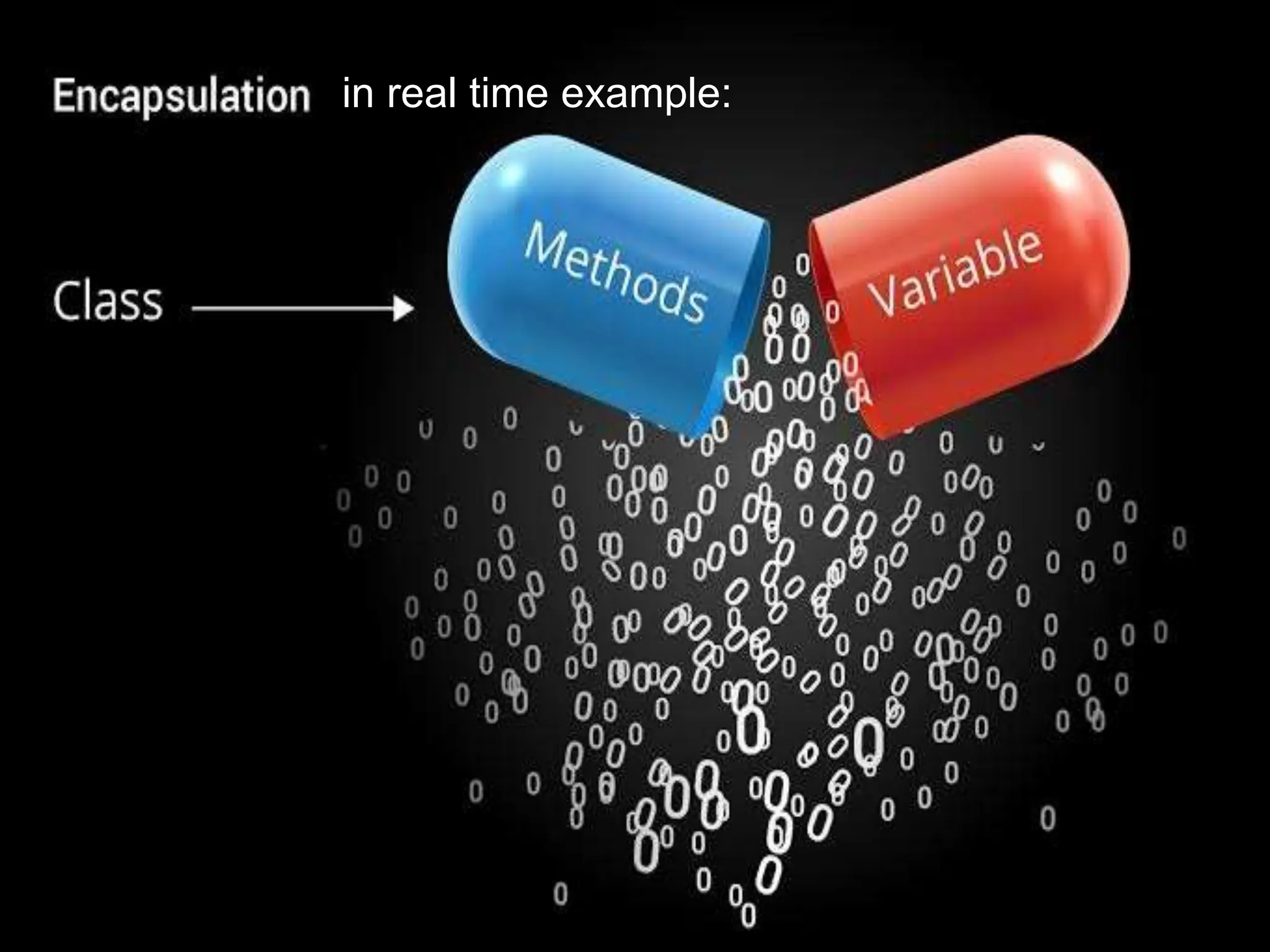
![Example of Encapsulation in Java:
package com.javatpoint;
class student
{
public static void main(String[] args)
{
Student s=new Student();
s.setName("vijay");
System.out.println(s.getName());
}
}](https://image.slidesharecdn.com/oops-240205162422-b2fb31a6/75/object-oriented-programming-concept-in-java-pptx-35-2048.jpg)
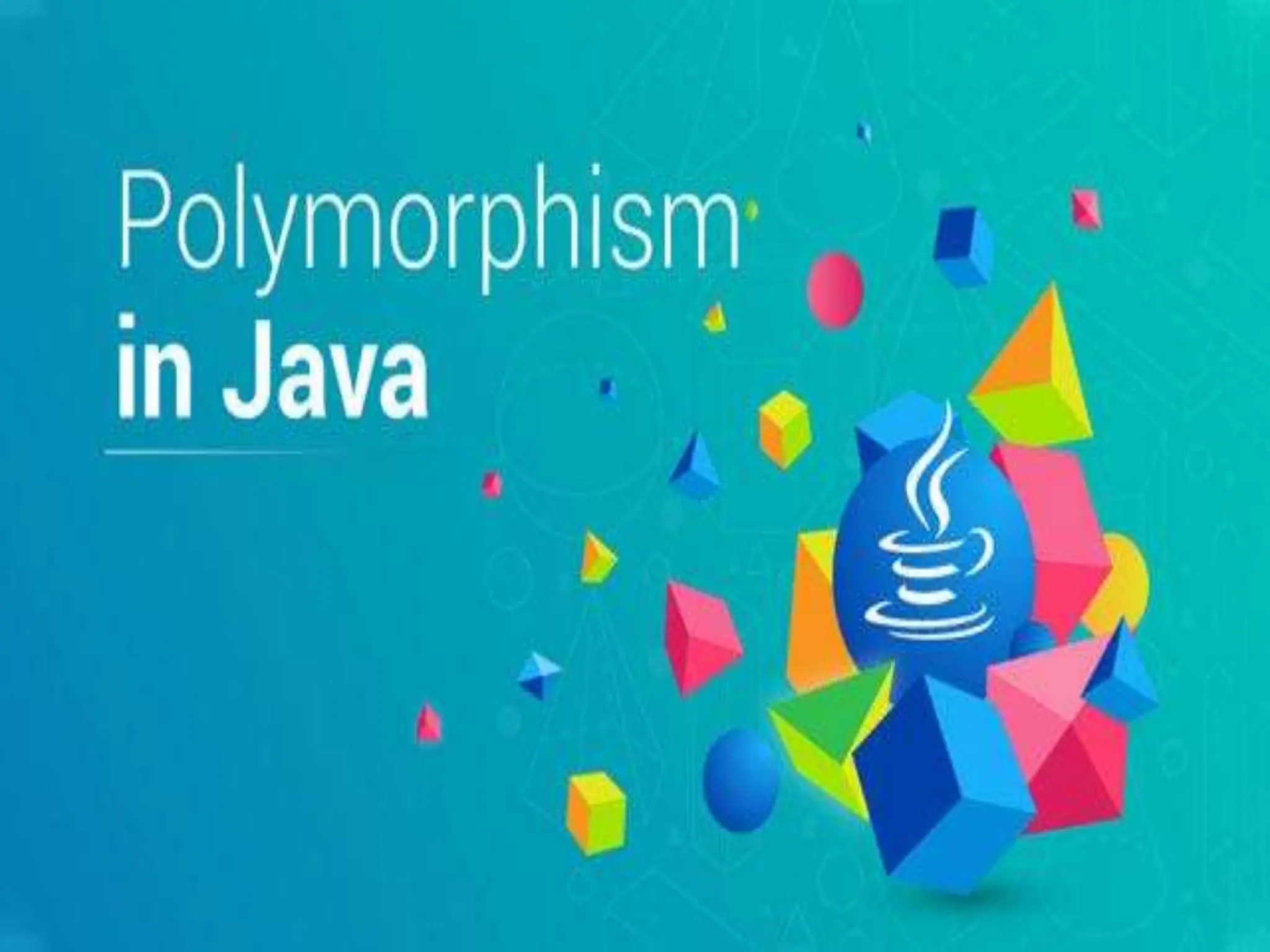
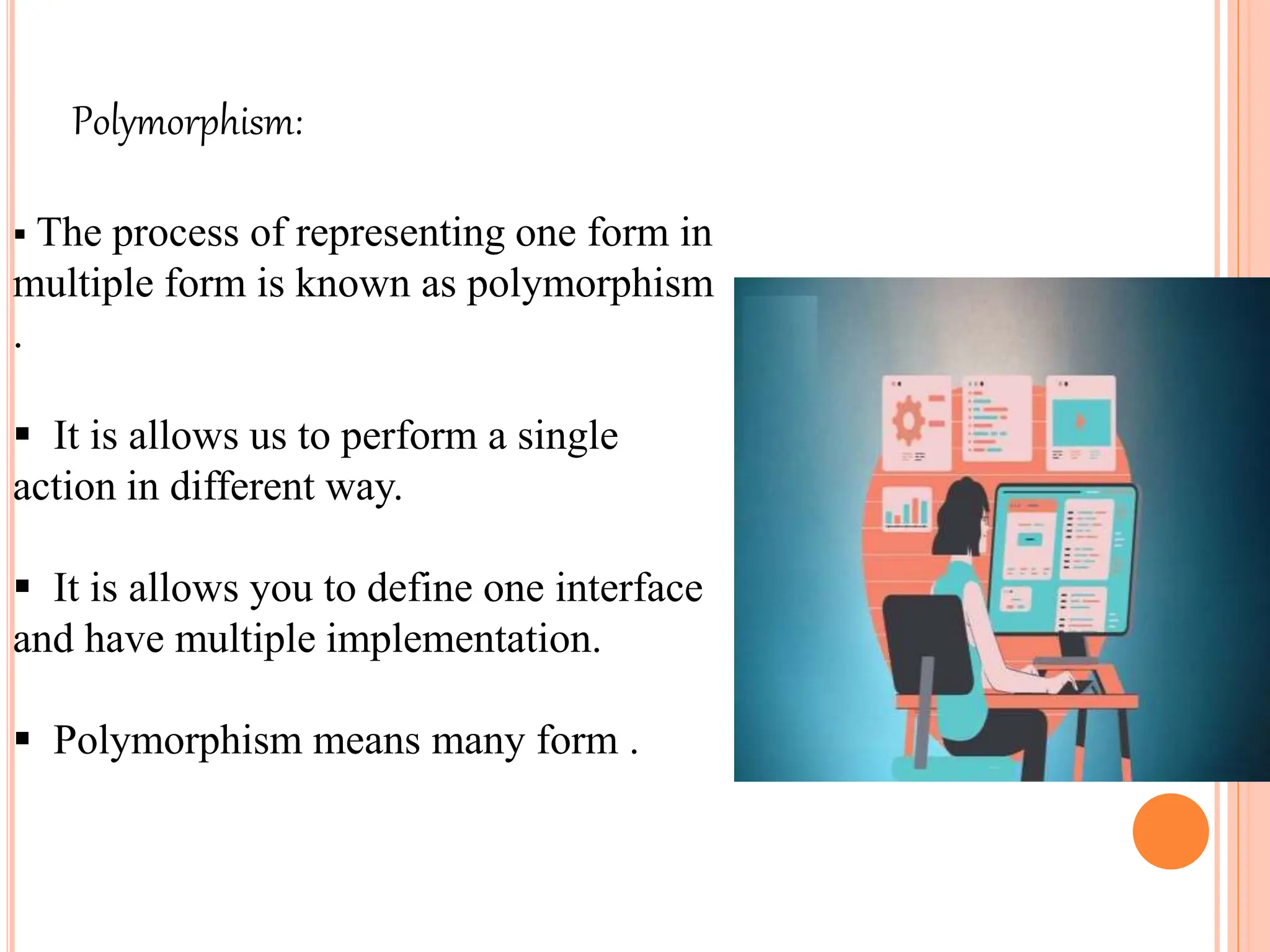
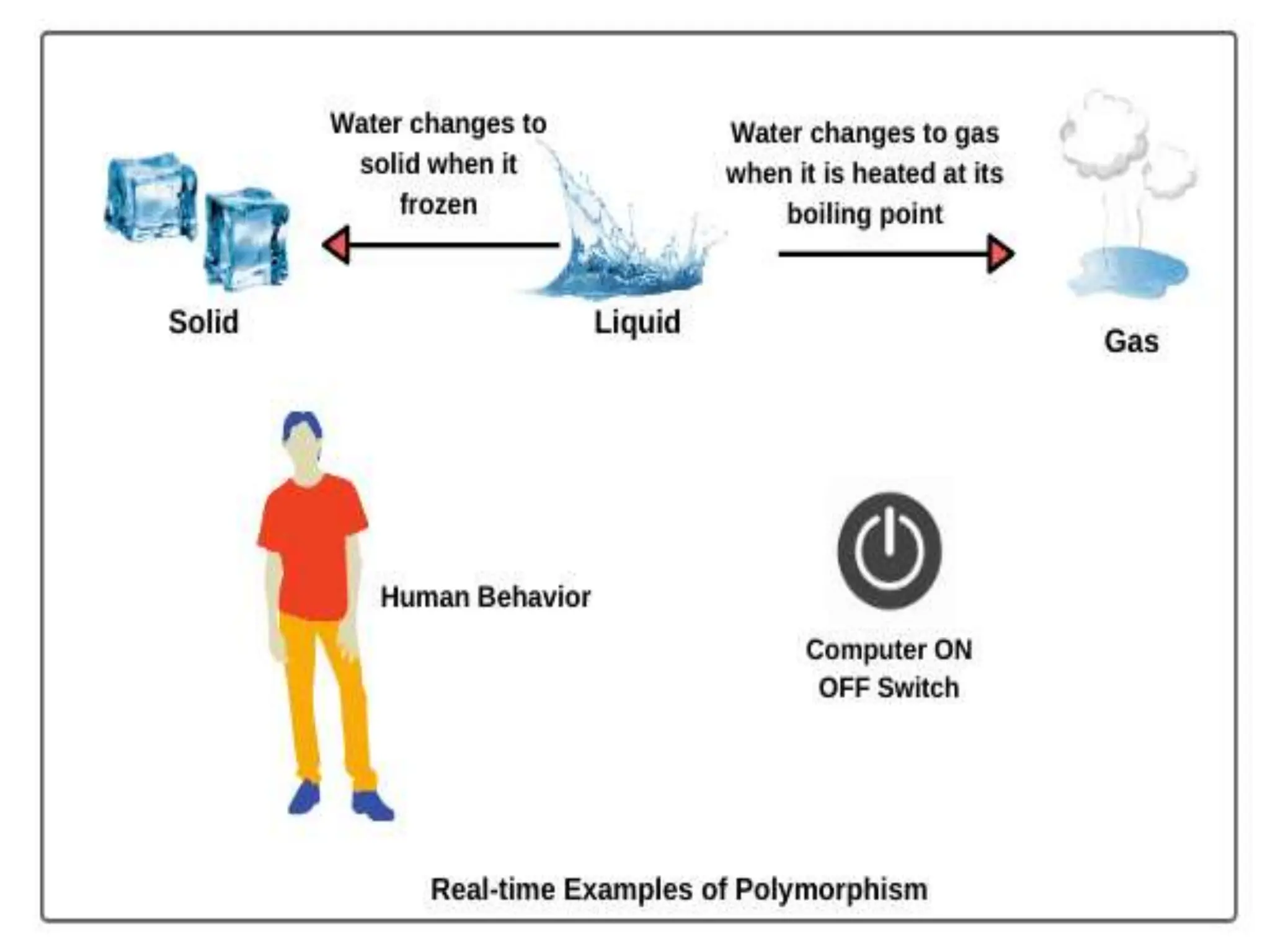
![Example of Java Runtime Polymorphism:
class Bike
{
void run(){System.out.println("running");
}
}
class Splendor extends Bike
{
void run(){System.out.println("running safely with 60km");
}
public static void main(String []args)
{
Bike b = new Splendor();
b.run();
}
}](https://image.slidesharecdn.com/oops-240205162422-b2fb31a6/75/object-oriented-programming-concept-in-java-pptx-39-2048.jpg)
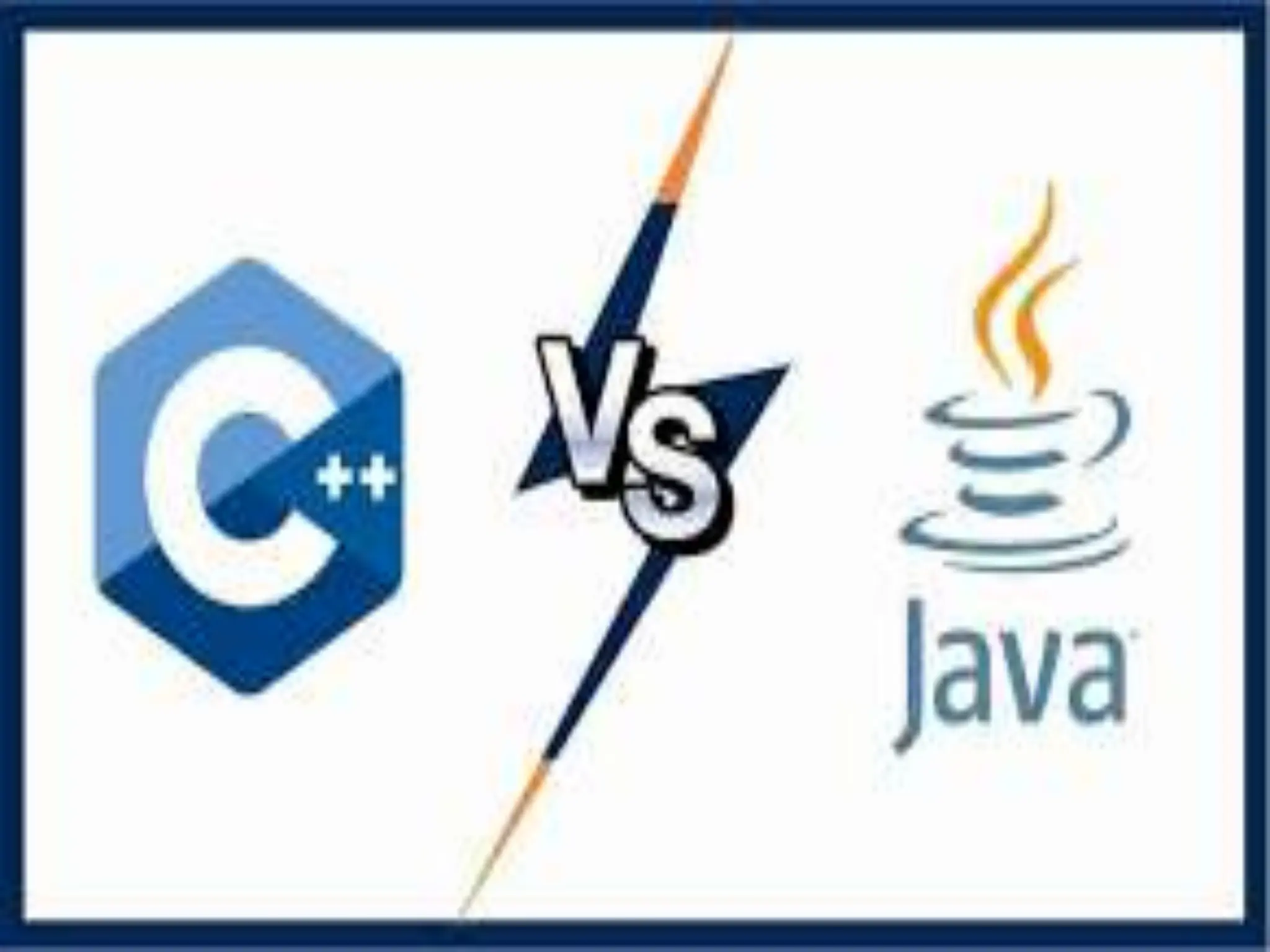
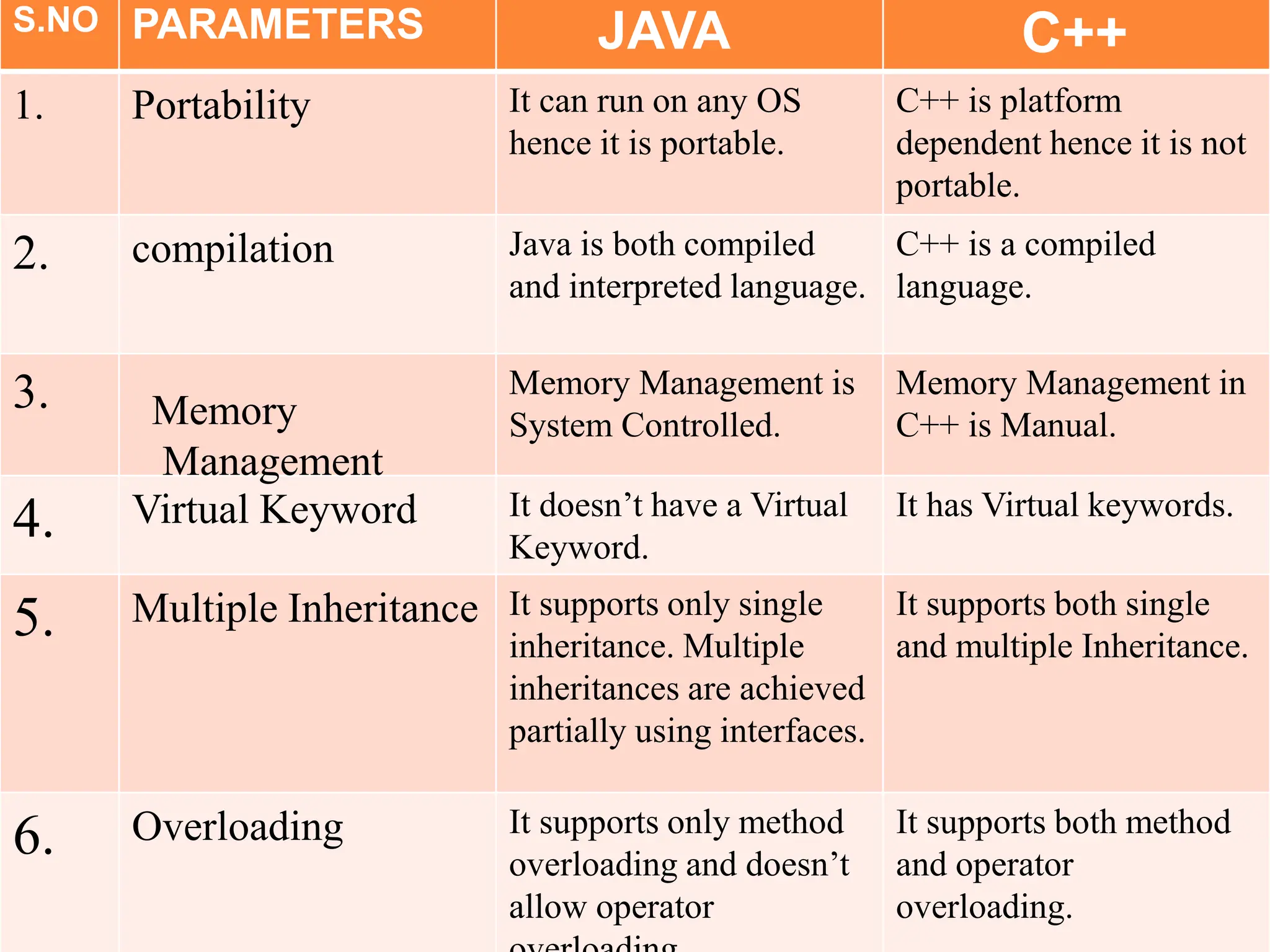
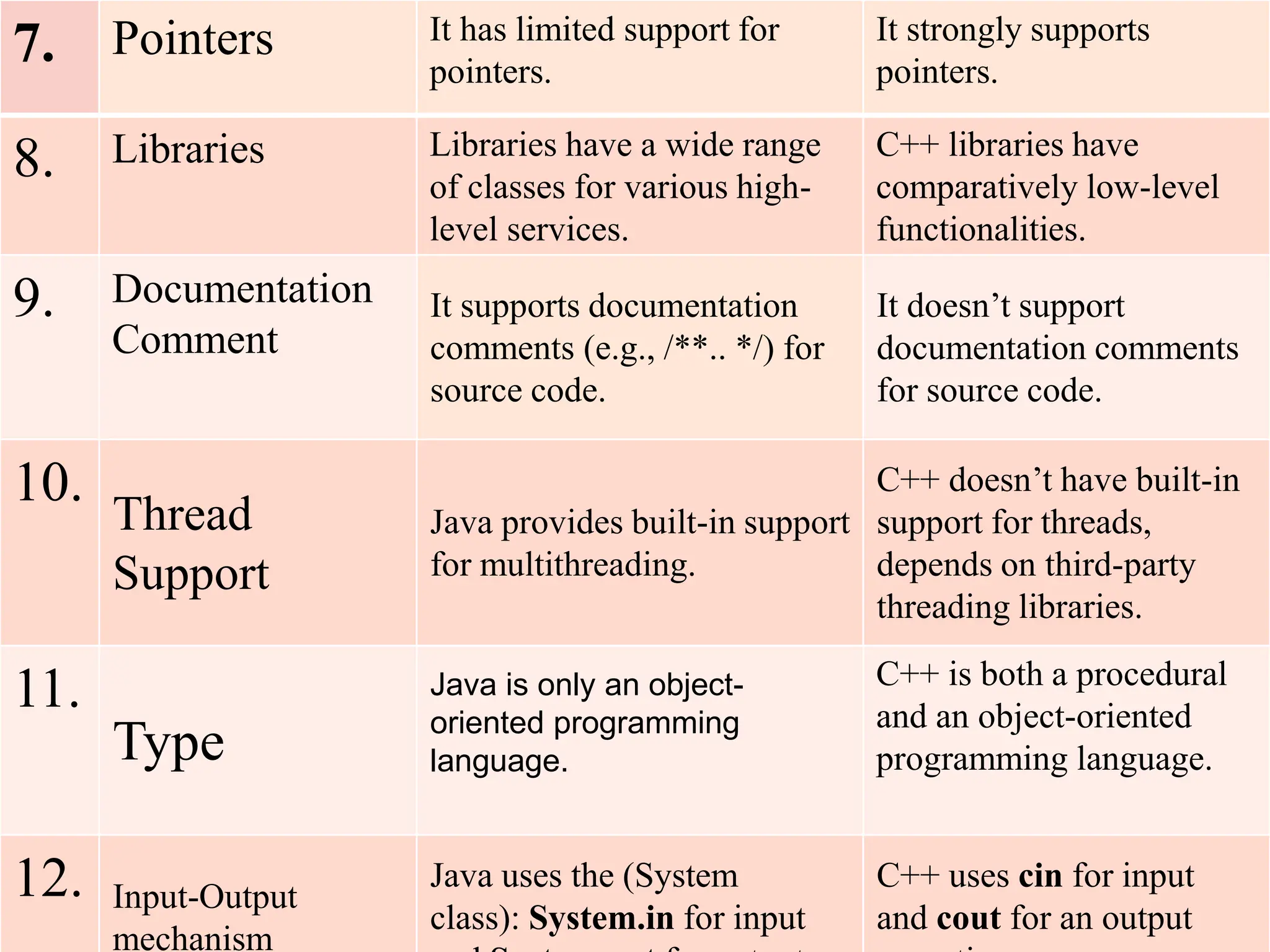
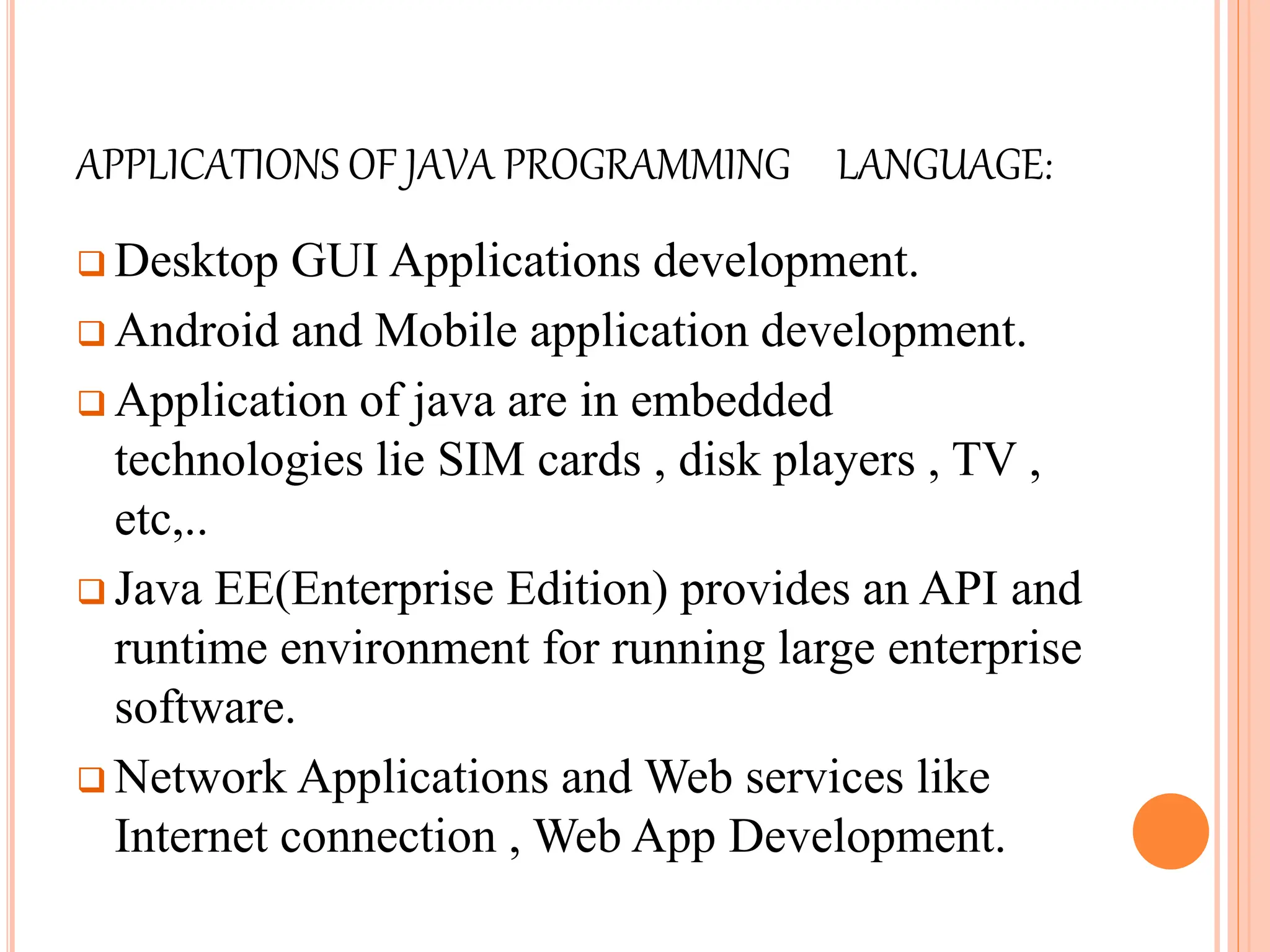
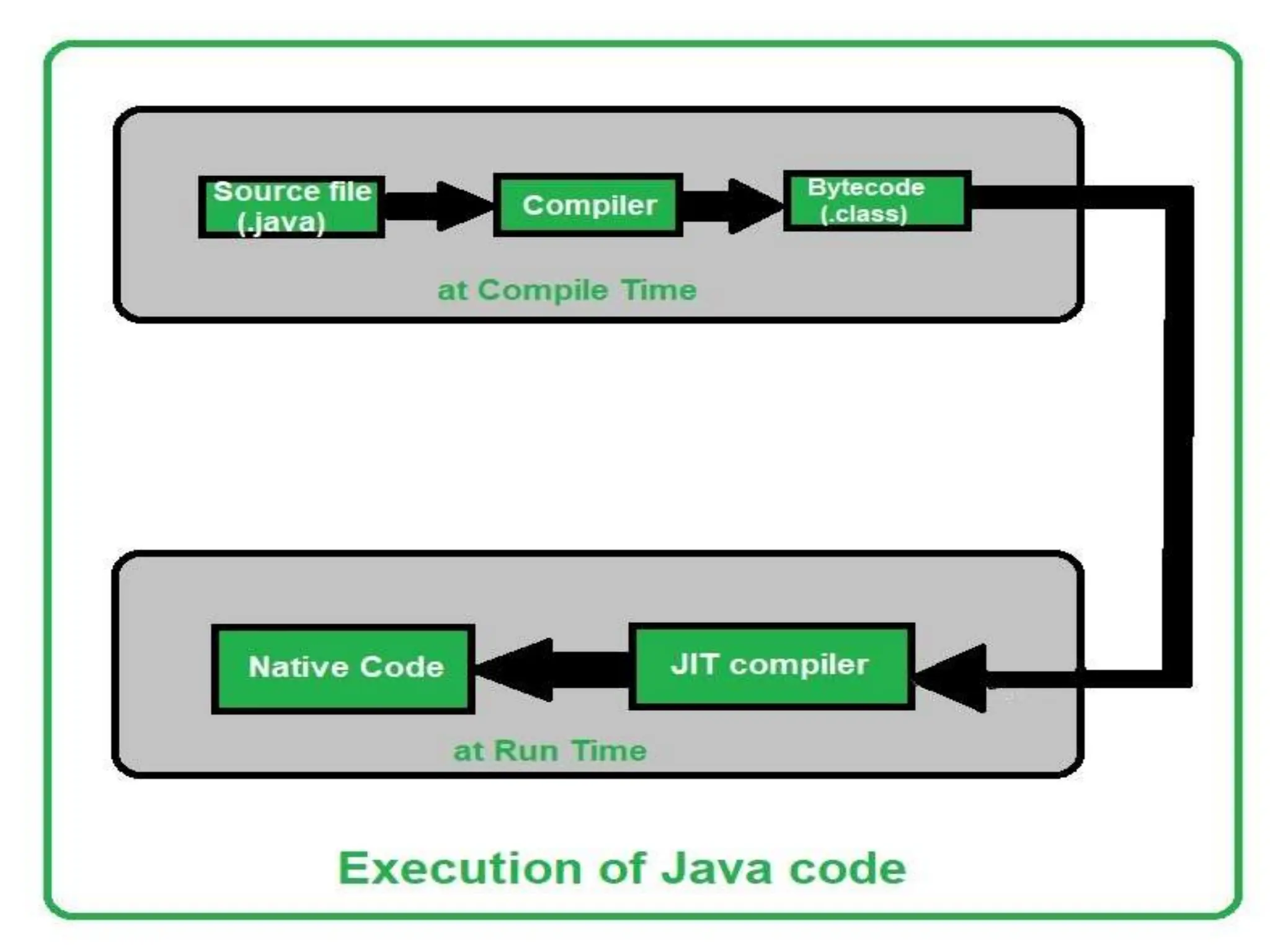
![SYNTAX OF JAVA :
import java.io.*;
class GFG
{
public static void main (String[] args)
{
System.out.println("GFG!");
}
}](https://image.slidesharecdn.com/oops-240205162422-b2fb31a6/75/object-oriented-programming-concept-in-java-pptx-45-2048.jpg)
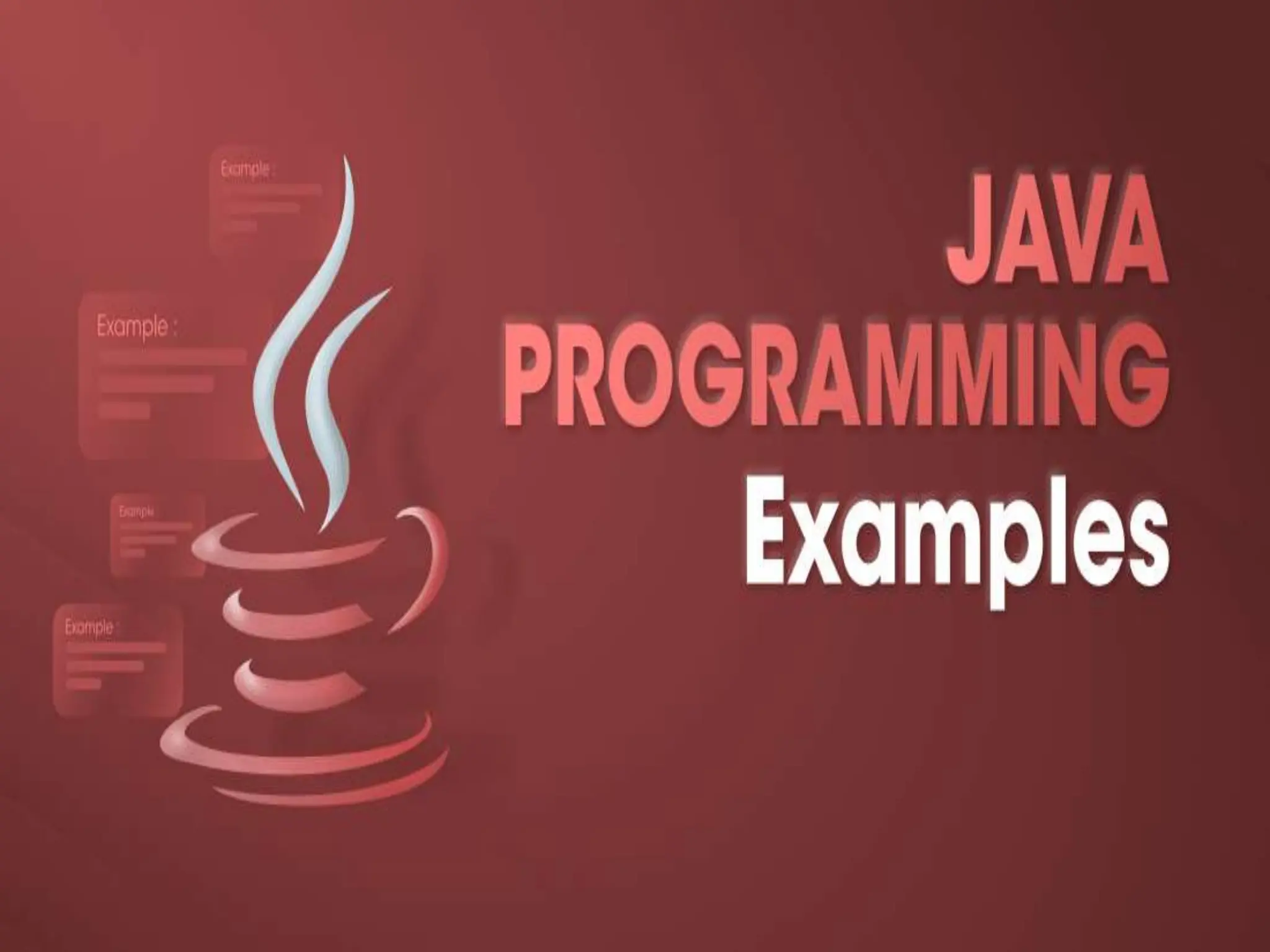
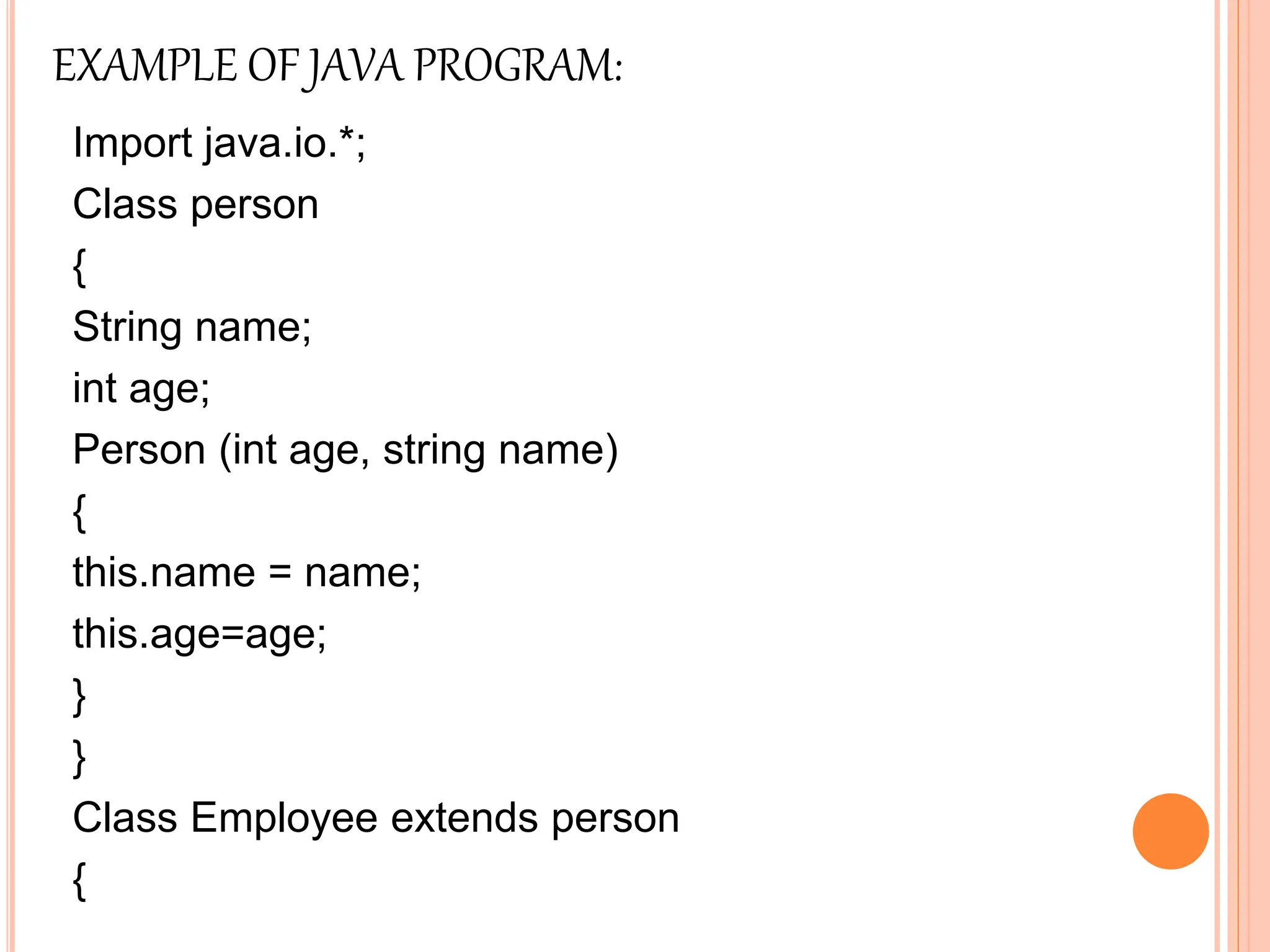
![int emp _ id;
int emp _ salary;
Employee( int id, String name, int age , int salary)
{
Super(age , name);
emp_id=id;
emp_salary=salary;
}
System.out.println(“Employee ID:”+emp_id);
System.out.println(“Employee name:”+name);
System.out.println(“Employee age:”+age);
System.out.println(“Employee salary:”+emp_salary);
}
}
Public class main
{
Public static void main(string[]args)](https://image.slidesharecdn.com/oops-240205162422-b2fb31a6/75/object-oriented-programming-concept-in-java-pptx-48-2048.jpg)
